
Until the last moment, we did not expect to see something remarkable here. Even when we were already inside the workshop. You can't really see anything in such places at night, and shining a flashlight is not always a good idea. Therefore, we began to walk between the production lines and try to understand where we ended up.
The workshop was almost completely filled with woodworking tables and some incomprehensible drawers.

We were already beginning to get upset that we would not find anything interesting here, when suddenly, in the corner of the workshop, we saw the tail of the plane, imposingly towering over the fence! On the tail was the Soviet flag!

Realizing that luck had not left us, and the morning would be interesting, we went to fill up the bed right in the aircraft cabin, moving the seats for the passengers so that we could lie down.

So, the model shop of the aircraft plant in all its glory:

Let's traditionally start with not the most interesting surroundings of the workshop and move on to the most interesting ones.
The workshop can be conditionally divided into three parts. The first is everything you need to work with wood: from work tables with hand tools to massive drilling and milling machines. The second part is the layouts themselves, most of which were built here. It is quite possible that a huge 1: 1 model of the IL-114 was produced in this very workshop in the distant Soviet ones. The third part - just this very IL-114, it is worthy of a separate story.
Part 1. Woodworking.
Aesthetically rich drilling machine with tons of levers and goodies:
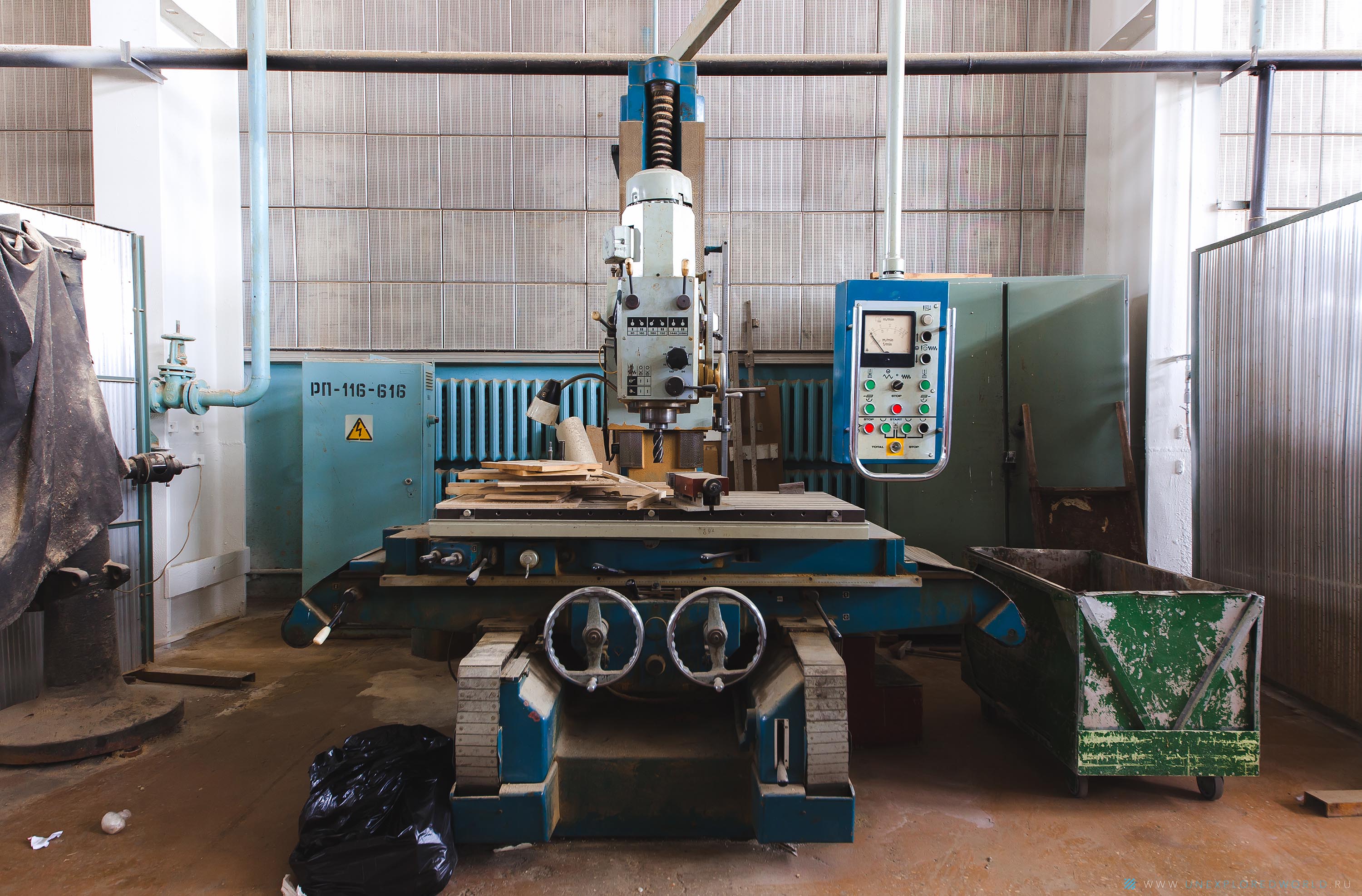
Control panel for this space device:
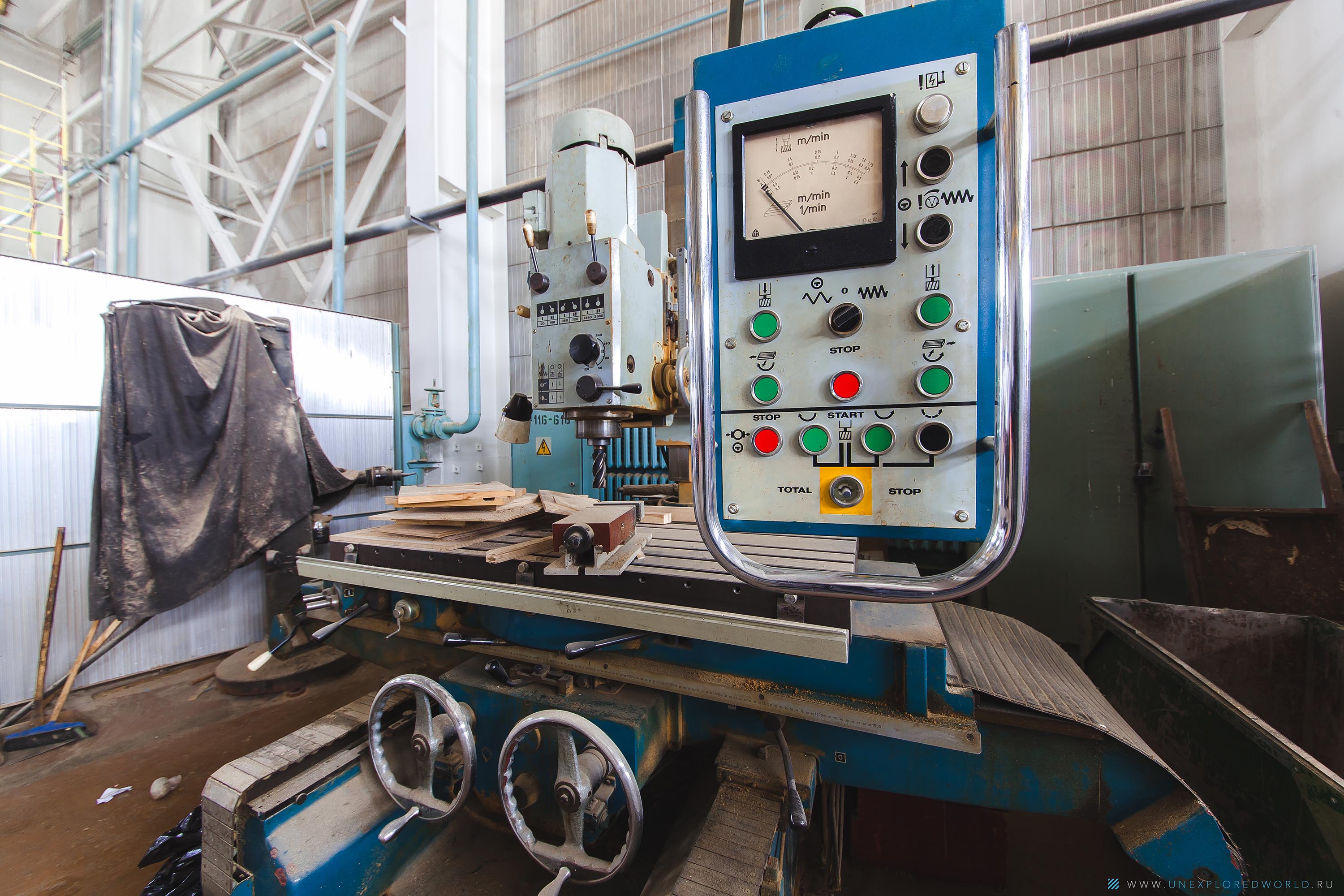
Drilling machine is simpler:

And this is a jigsaw. This is the first time I've seen this!

Here it is, closer:
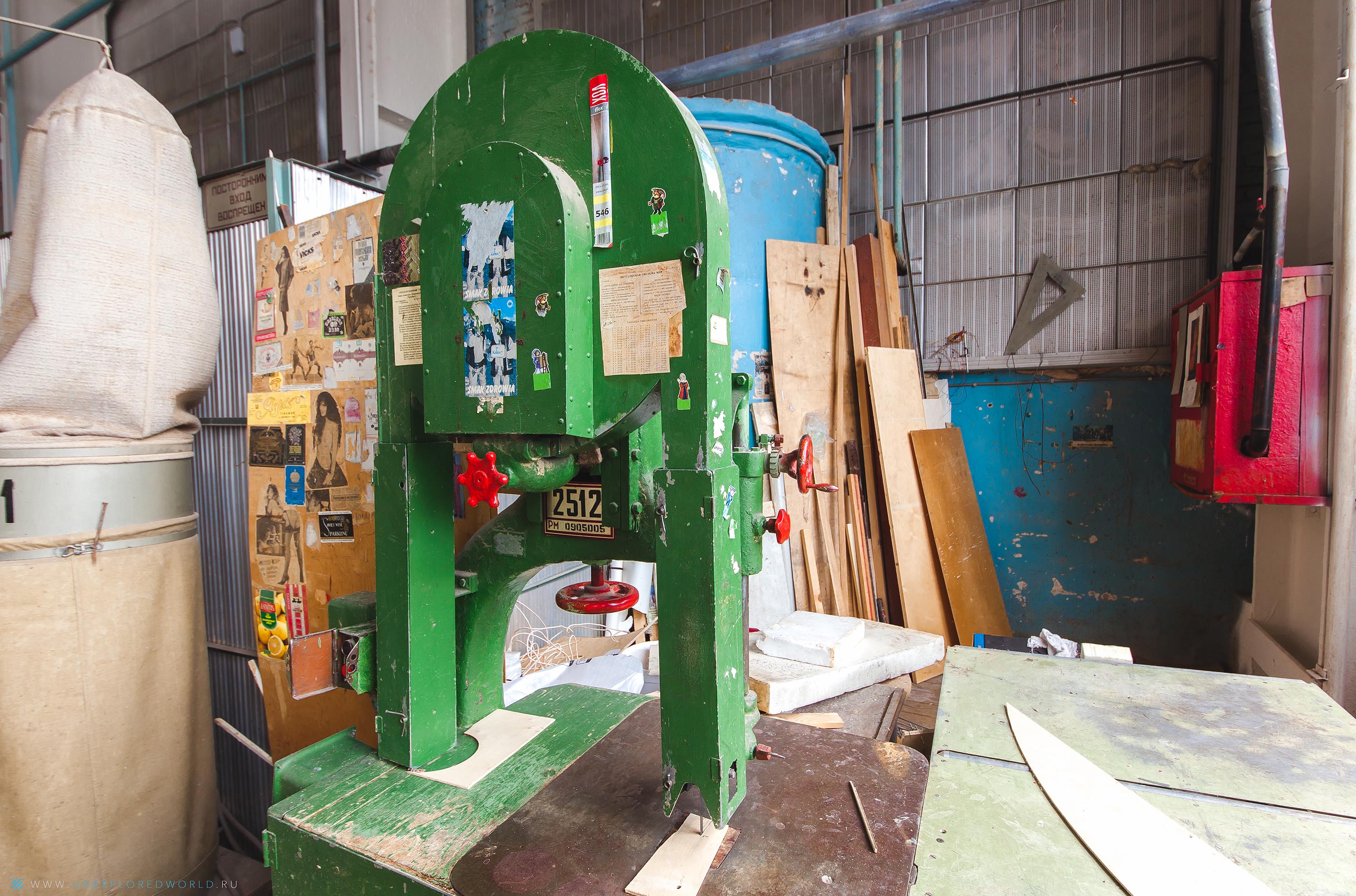
There are also machines in the room adjacent to the main workshop. As far as I understand, more precise work with wood was carried out in the main workshop, and its primary processing was carried out in the adjoining room.
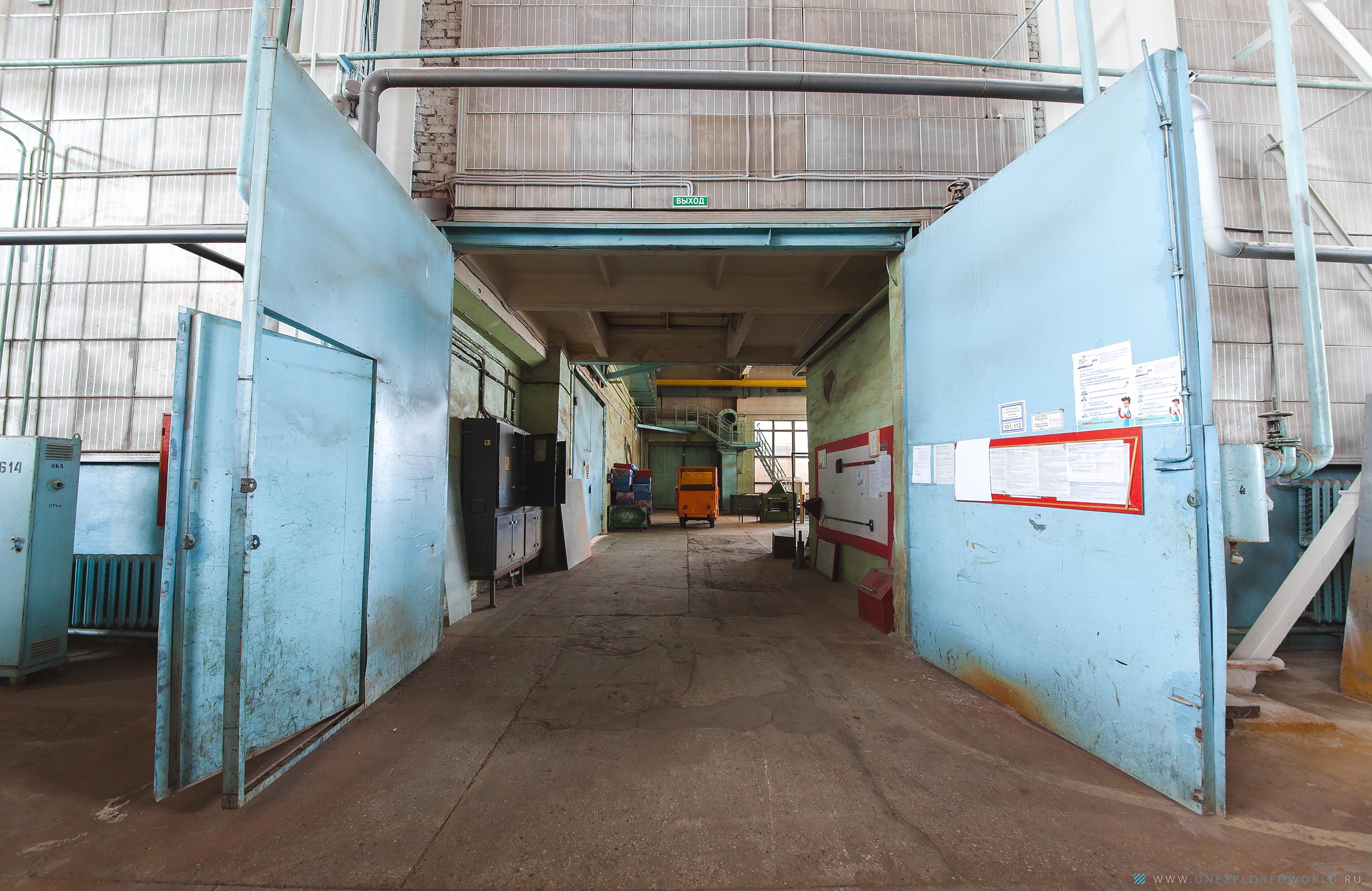
Here you can find another jigsaw machine:

This looks like a large thickness planer, but I could be wrong:

Circular machine:

Milling machine:

All machines are equipped with vacuum cleaners and trash cans, and in general, a very strict order is maintained in all work areas!

Although in some corners this order is still "working".

There are also tables for working with hand tools and small details:

Here they glue, saw, grind and cut out various elements of the models.

Wooden blanks:

And more tables:
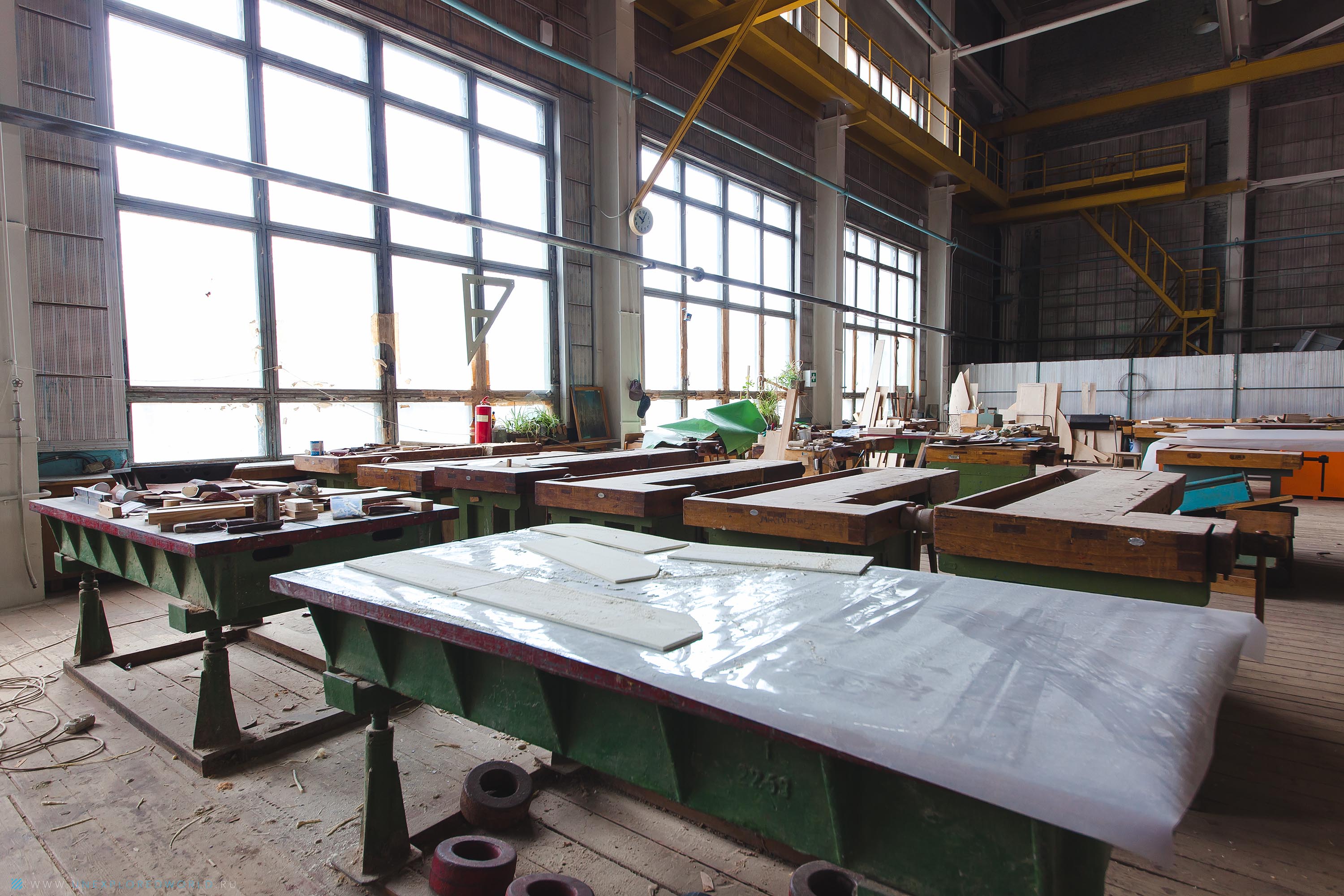
Clamps:

In addition to woodworking, the workshop has a modest metalworking corner. Basically, it was equipped, most likely to work with hardware and other fasteners for wooden structures.

And there is also a press for gluing parts together and this is a structure made of body clamps:
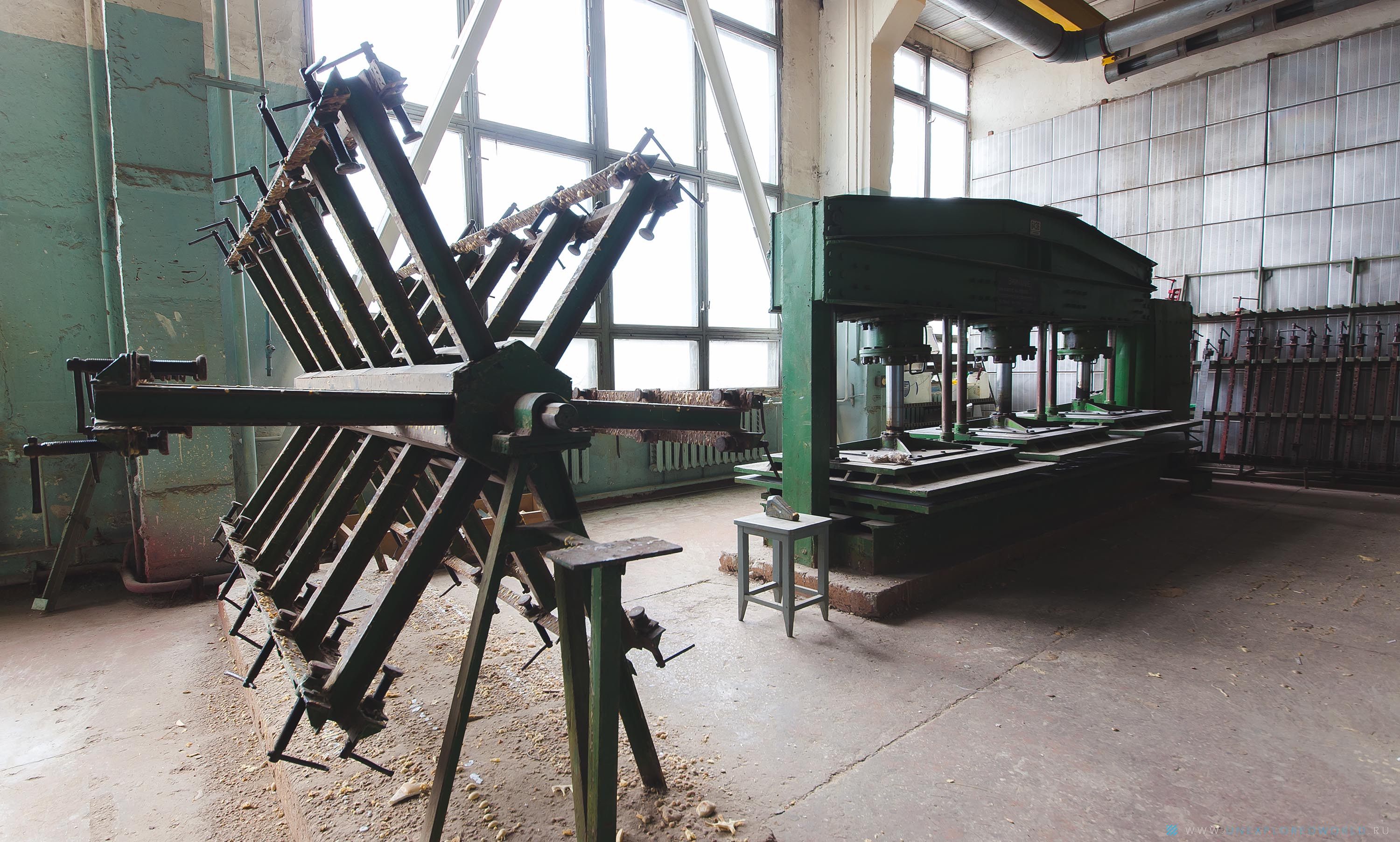
The abs looks very powerful:

Especially close.
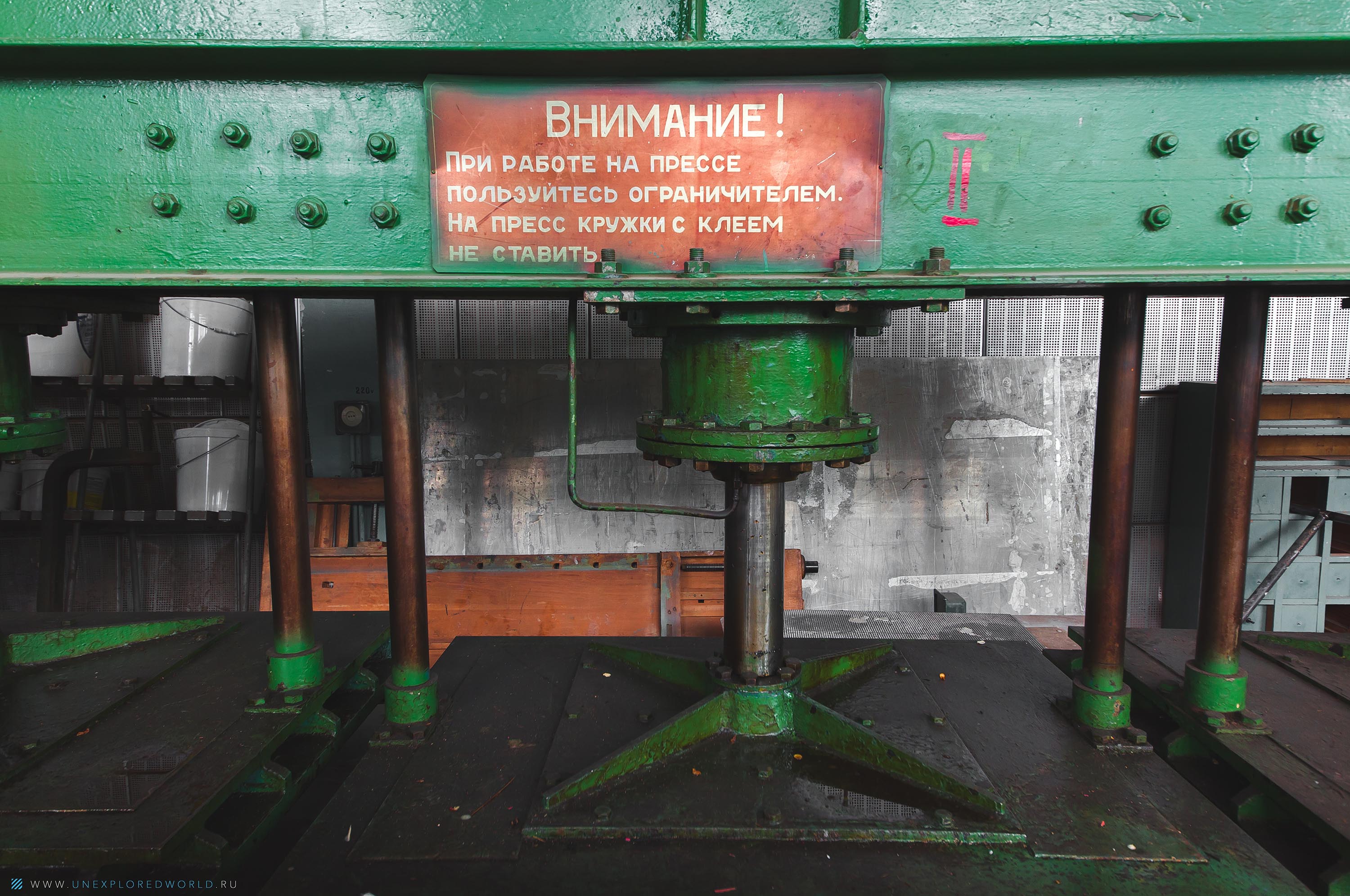
And the body clamps (clamps) apparently break so often that a separate rack was built for the broken ones.
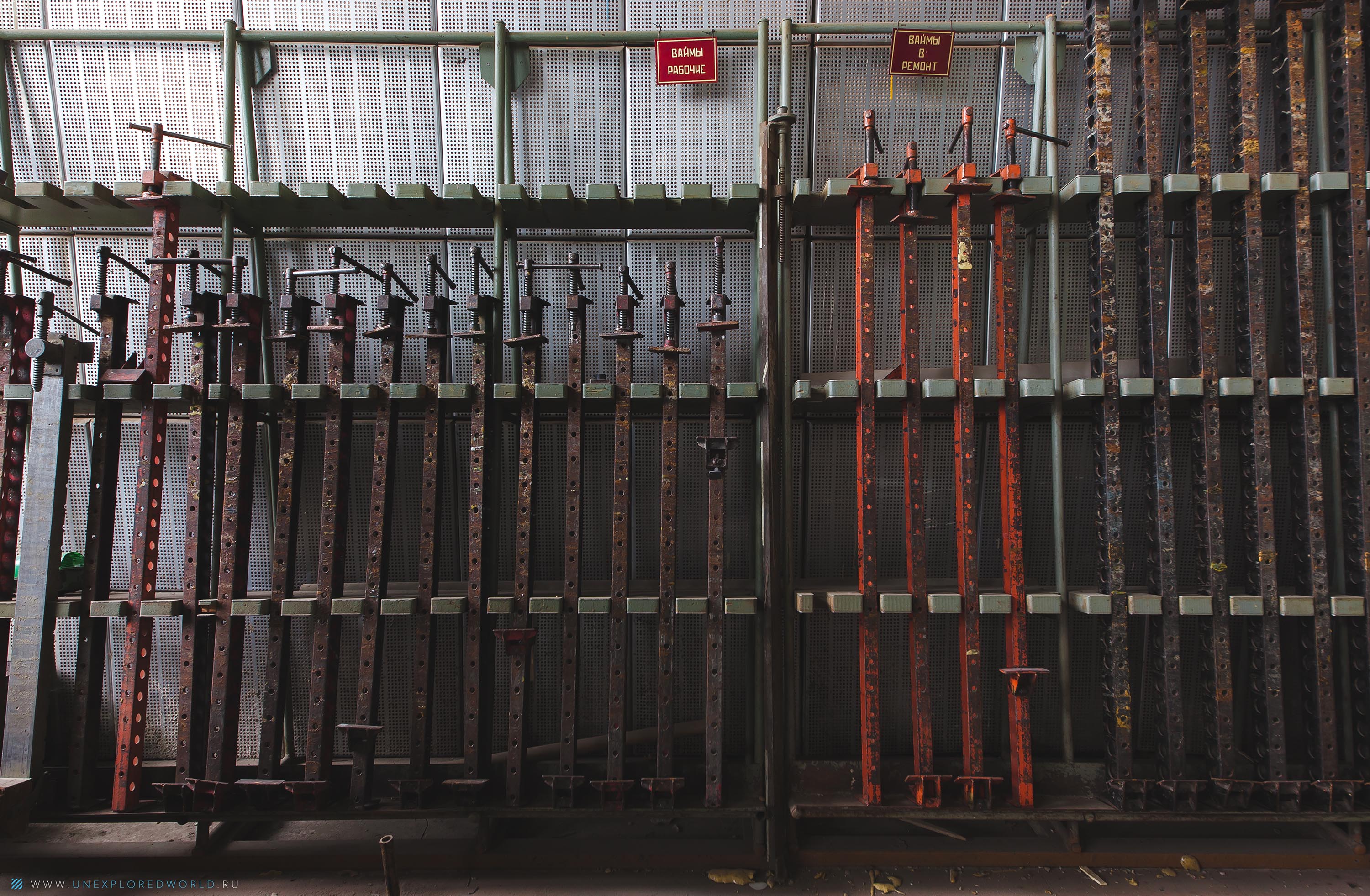
In addition to machine tools and equipment, there are two machines in the workshop, which you can't do without. The first, of course, is cargo. She is just the first in every sense:
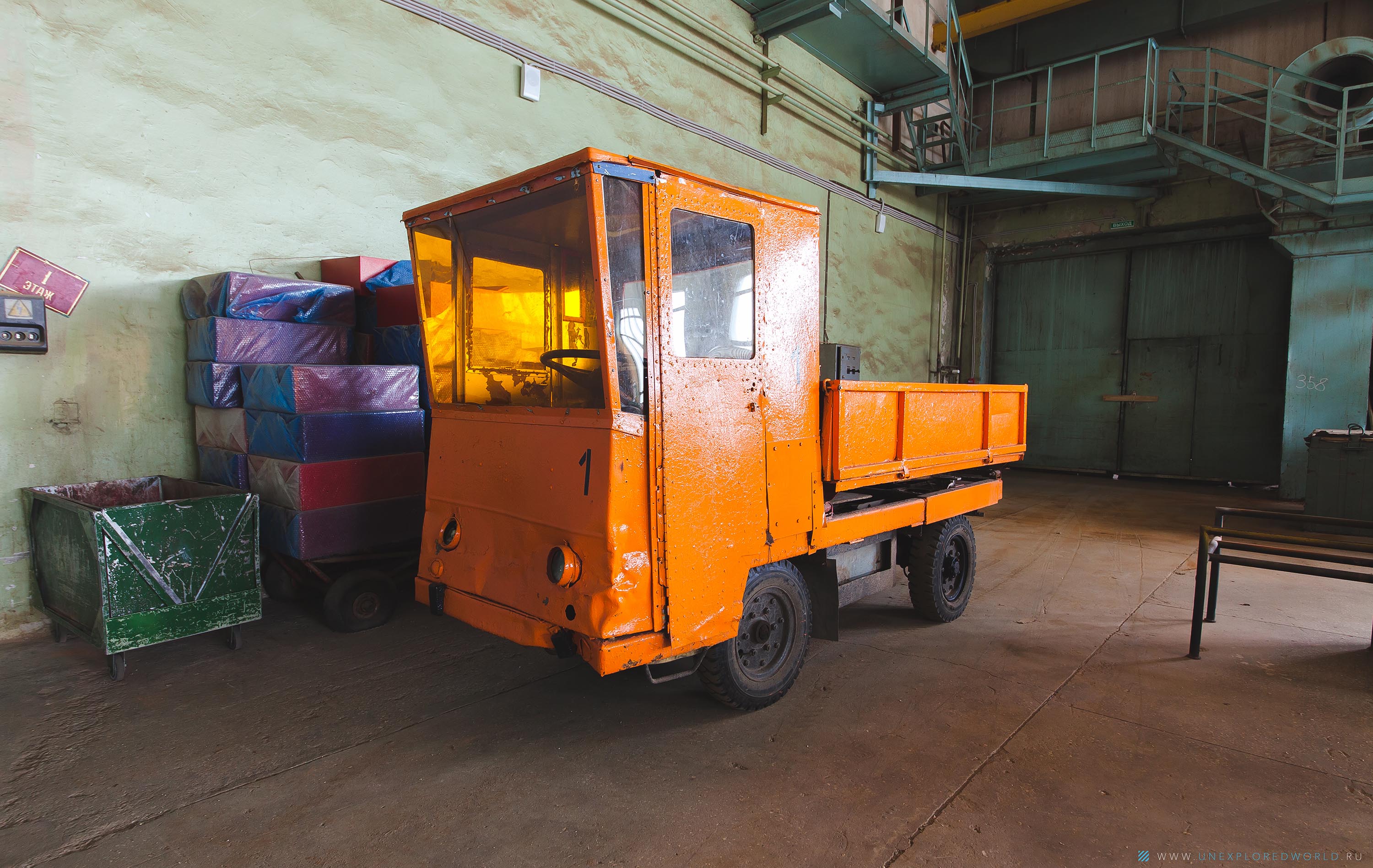
And the second, what do you think? Of course, it is a harvesting workshop, because this is a workshop in which they work with wood, and there is a lot of sawdust from it when processing.

So, we are done with the first part of the story and smoothly move on to the second.
Part 2. Layouts.
The workshop wouldn't be so interesting if it weren't for a bunch of wooden airplanes scattered all over the place.
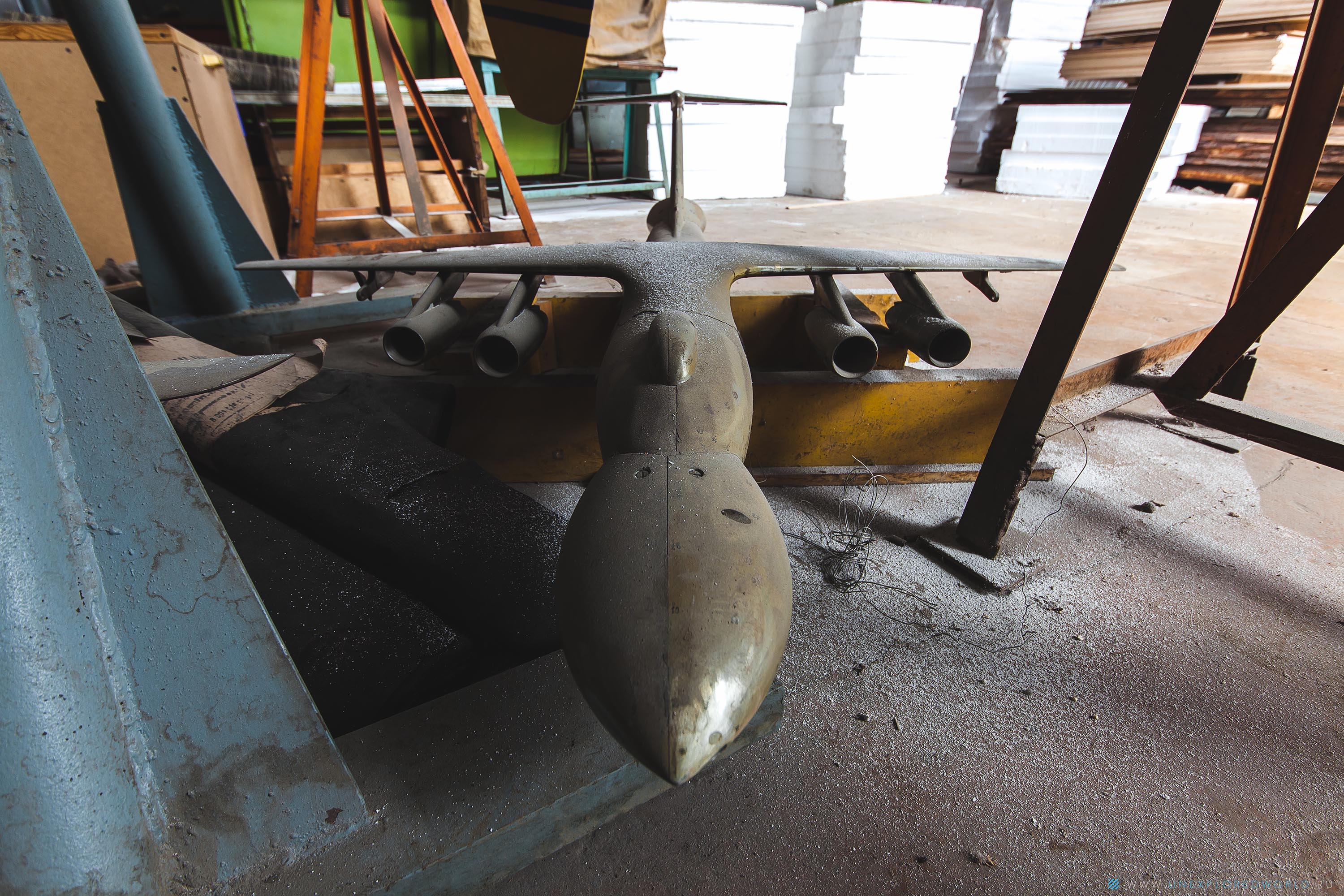
And there is a huge variety of them. The stage of production of mock-ups is very important in aircraft construction - not as much money is spent on small aircraft models as on full-size aircraft, but at the same time the model has approximately the same aerodynamic characteristics as a working aircraft. This allows a number of tests to be carried out and gross errors to be detected early in the design.


In the workshop you can find both small wooden blanks without any frills, and expensive, thought out to the smallest detail, aircraft models.
Turbines:
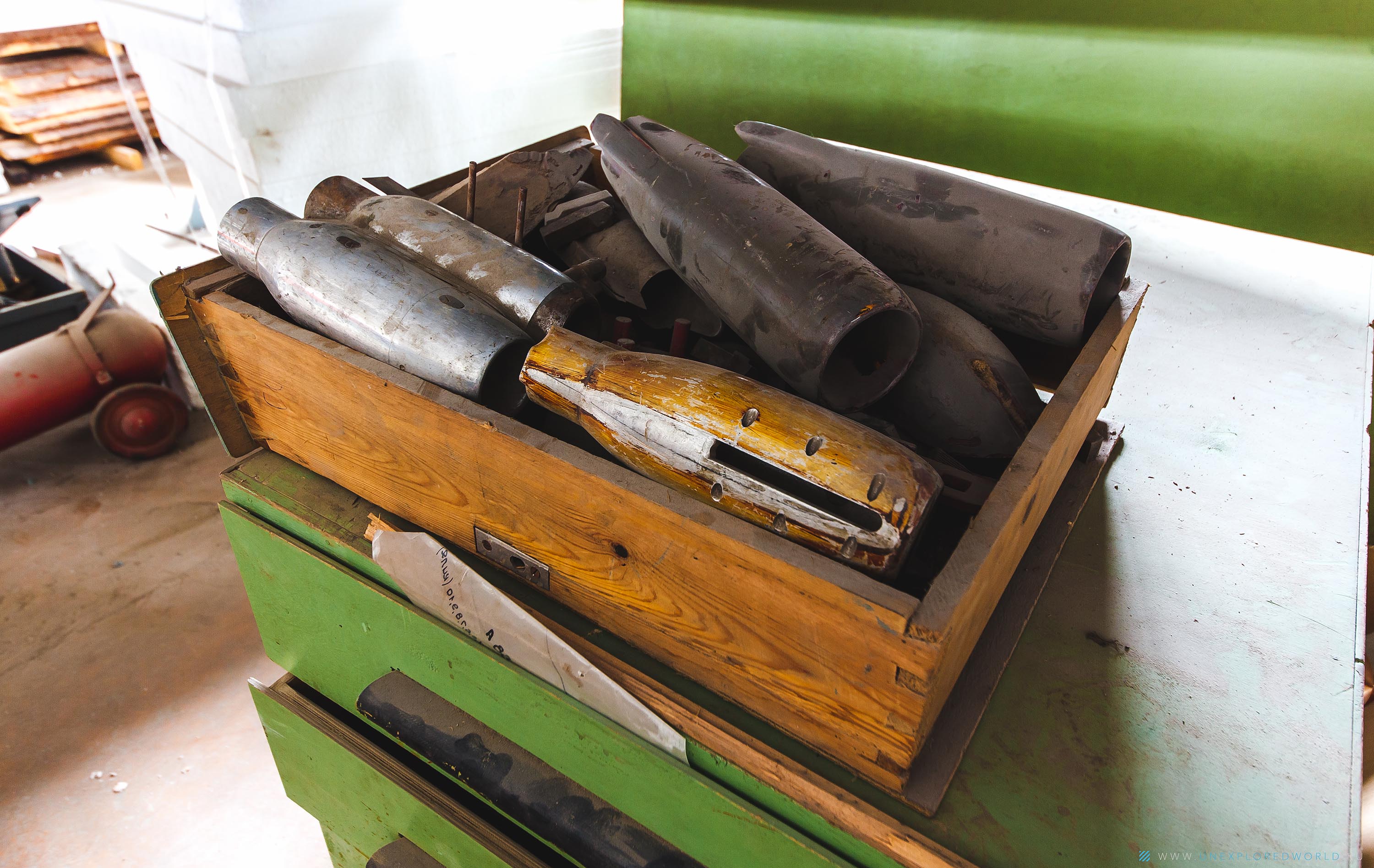
Blanks without frills:

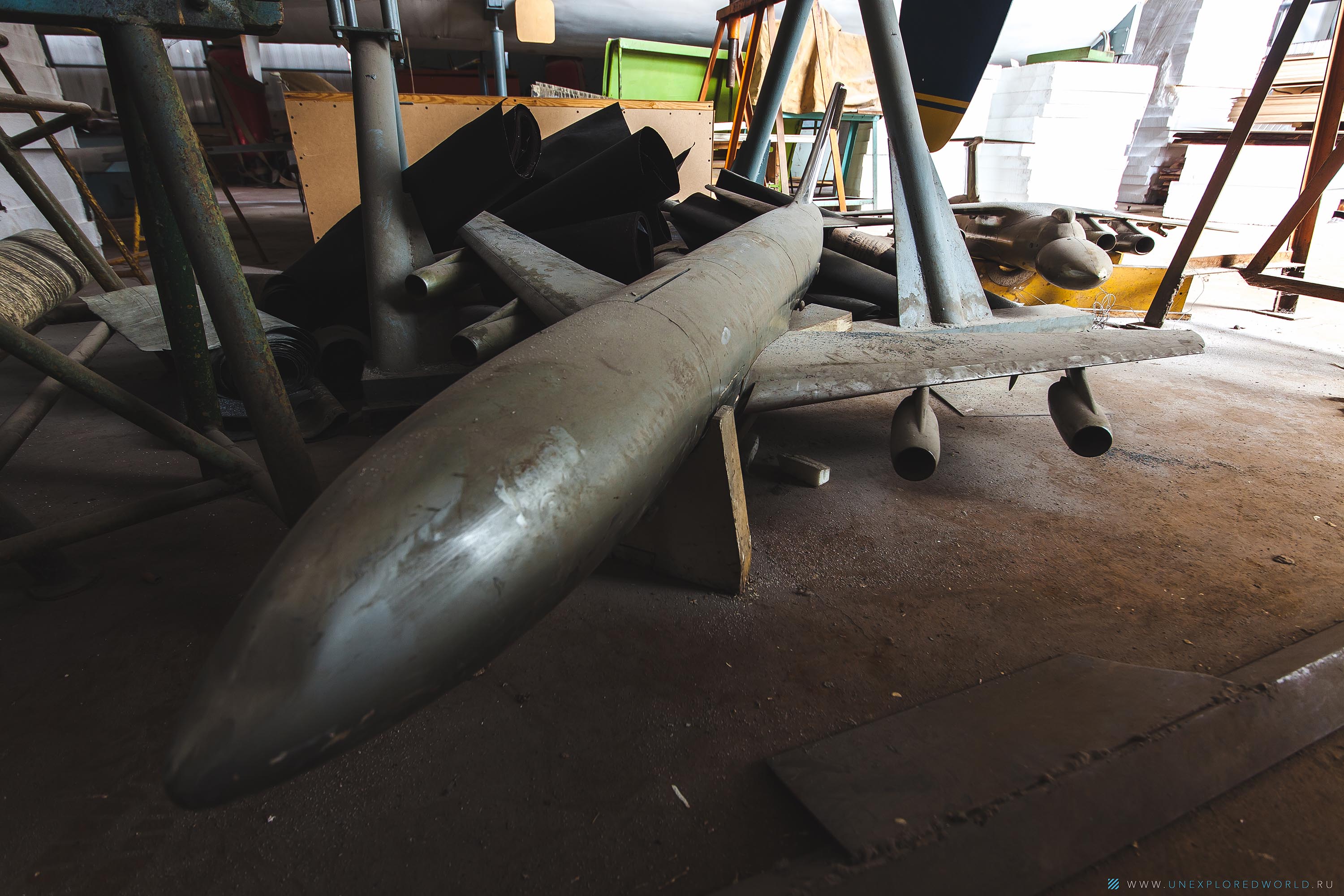
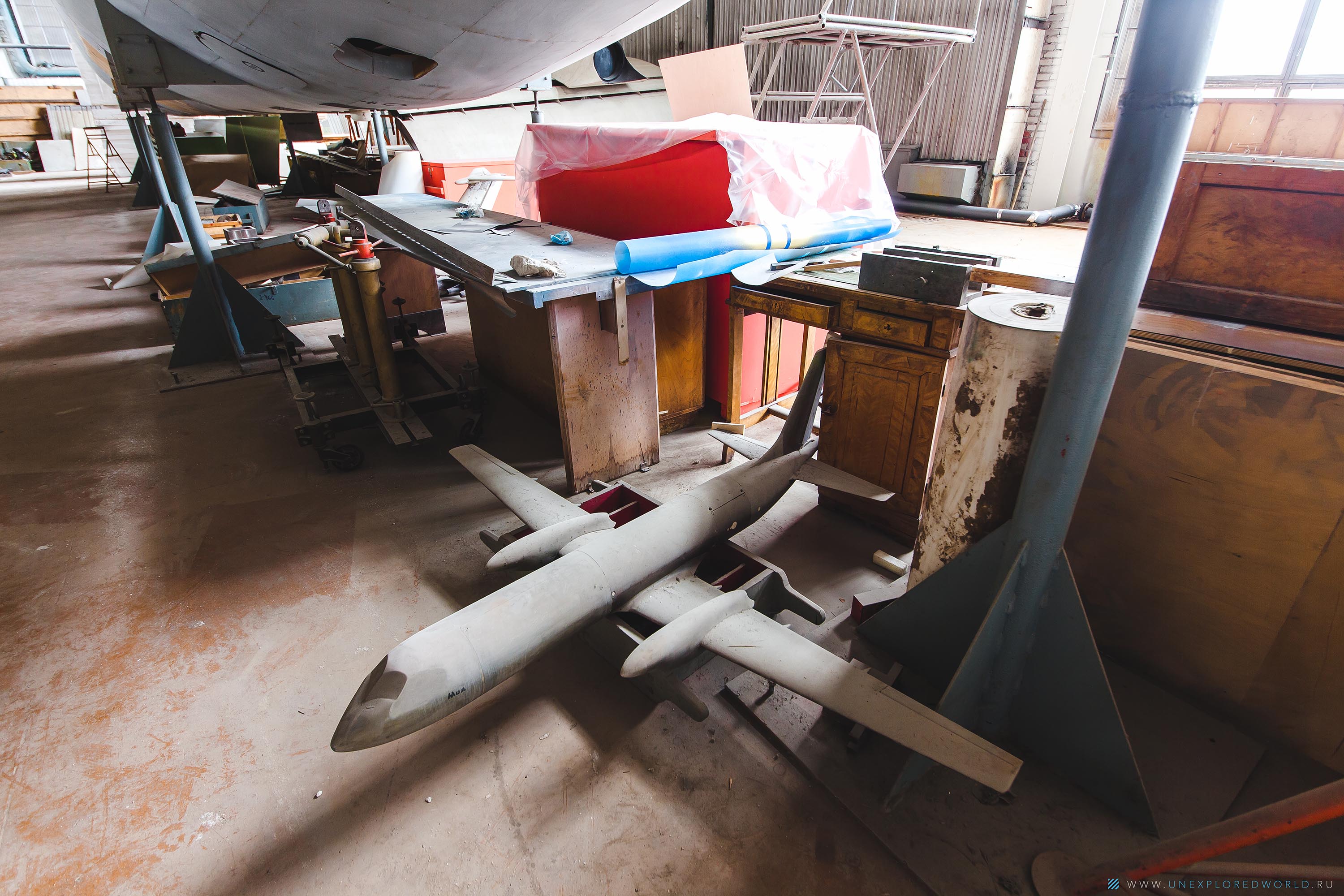


Despite the state of permanent conservation of the workshop, the company itself is actively engaged in the modernization of aircraft already in use. Therefore, they rarely remember the mock-up shop, but aptly. At the stage of model production, very intensive work is being carried out here, but the rest of the time - not a soul.
Special attention should be paid to the layouts built for the company to order. They look just like real airplanes and are most likely executed with maximum precision.
In addition to existing aircraft, there are only machines under development here, for example, the military transport IL-276.

It's funny, but the abbreviation "MTS", written next to the rather recognizable red egg, was originally perceived not at all as "Multipurpose Transport Aircraft". Total: half an hour of sex with Google - why would a telecommunications company IL with its own logo. As a result, the "recognizable red egg" turned out to be the front exit from the plane ...
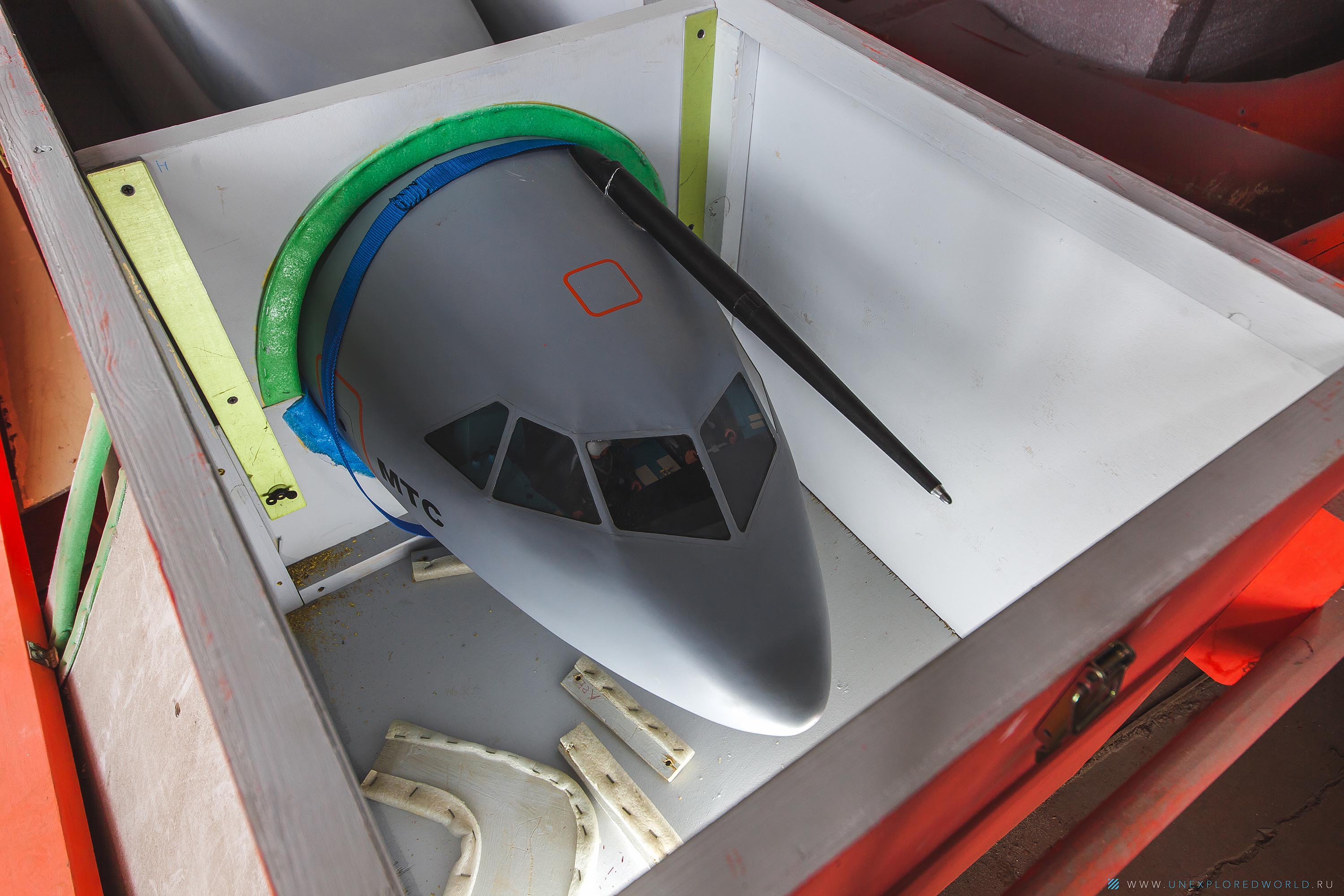
I don't know if it was a decorative idea, or if it has some functional meaning, but interesting models of military pilots were placed in the cockpit near the model of the 276th IL.
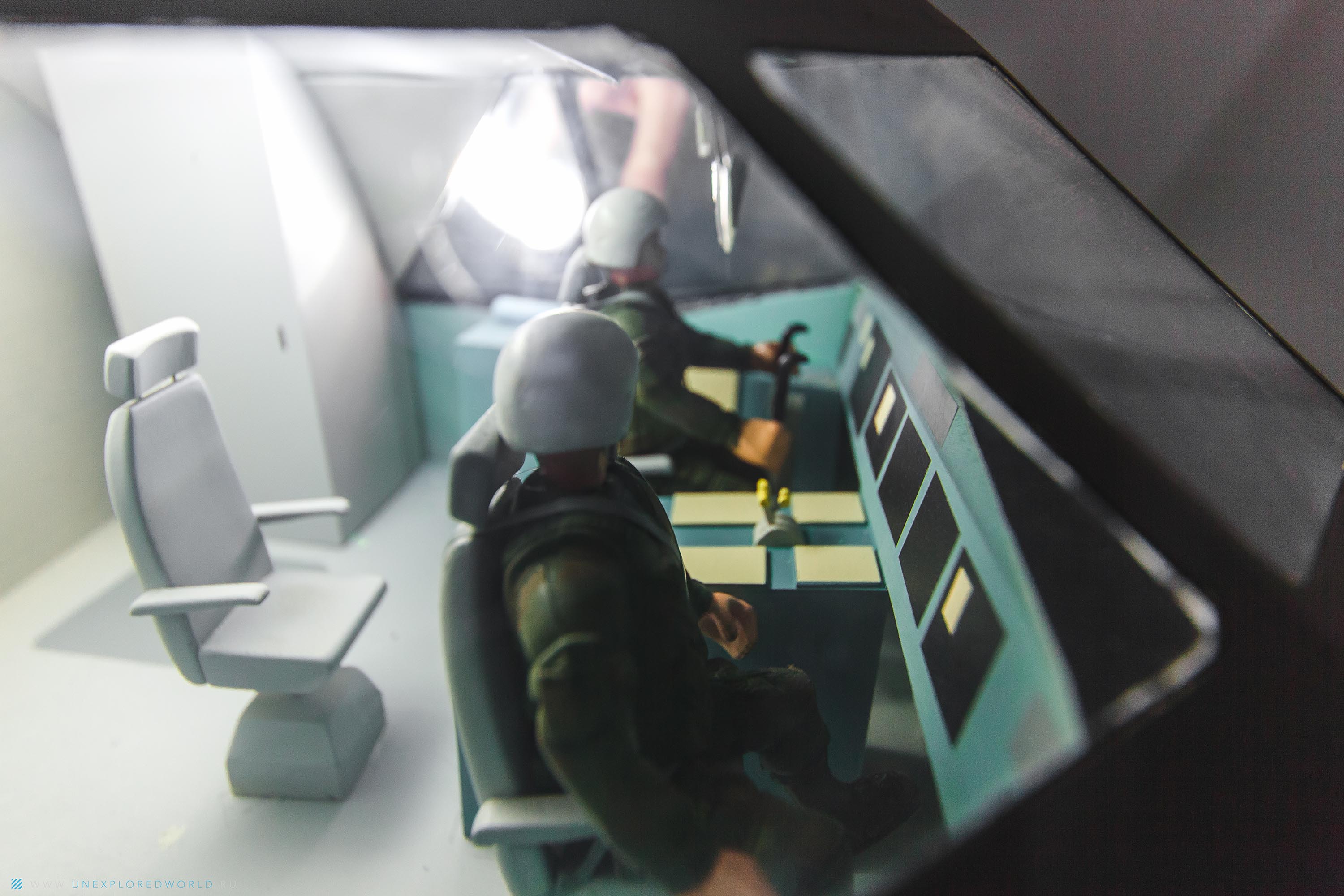
For some reason, the following picture evokes associations with the legendary Russian blockbuster "Steep Pique":

The most sophisticated car models are kept in red boxes scattered throughout the workshop.




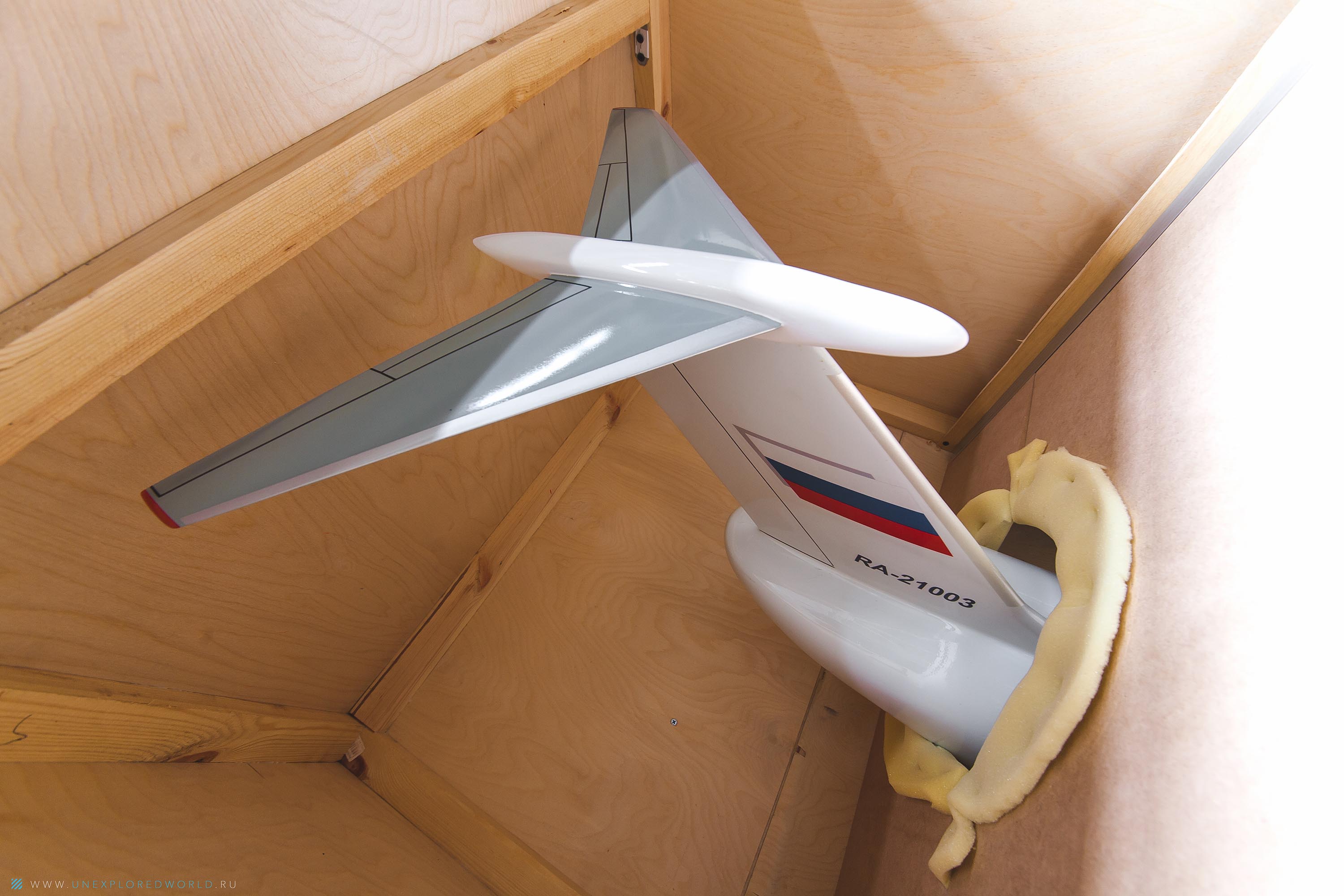
In the places where the wing connects to the fuselage, there are even some wires (probably to simulate the operation of turbojet engines or ailerons with flaps, or maybe it’s just decorative lighting). Naturally, we did not connect the breadboards to a power source, as we were afraid to accidentally spoil them.

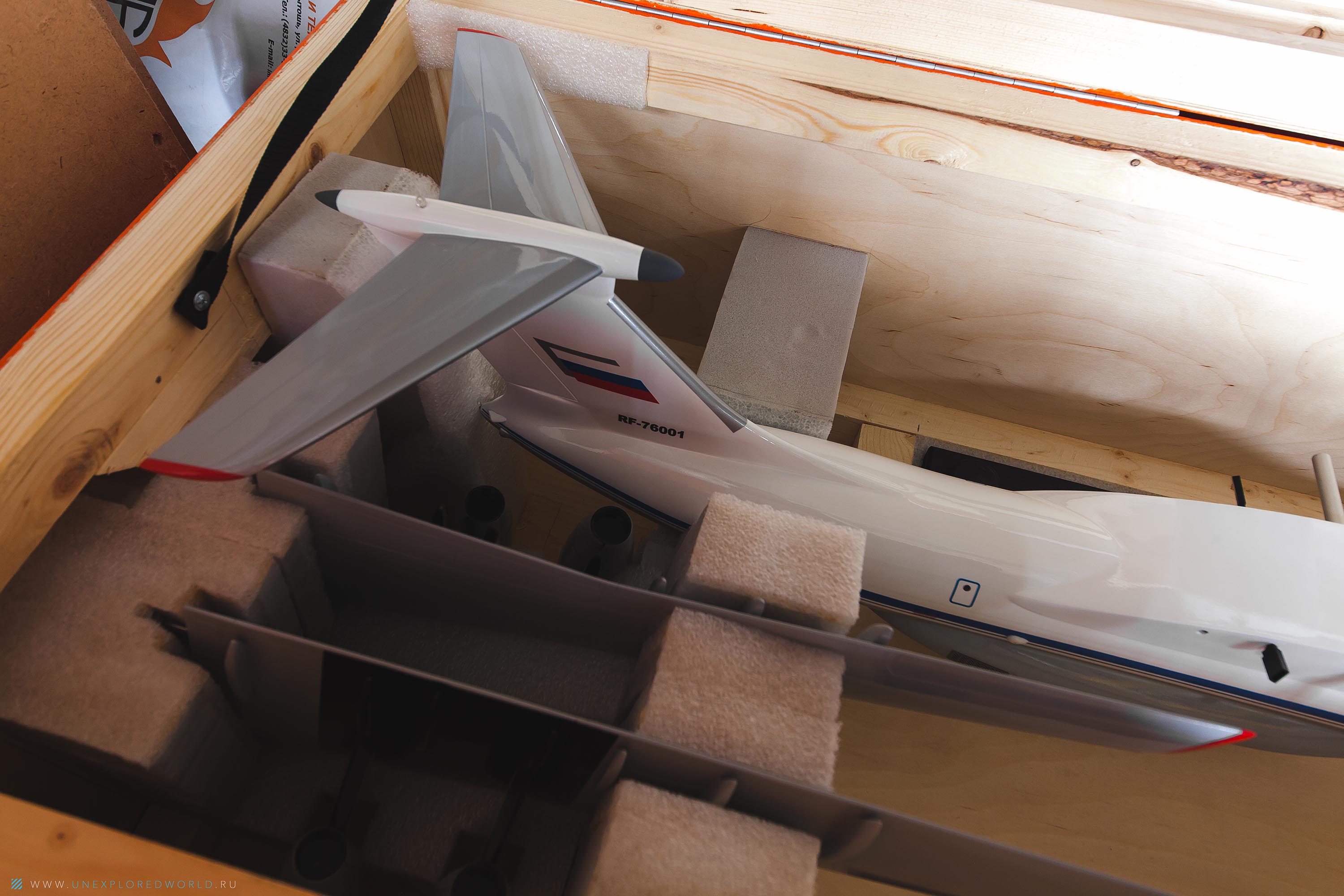

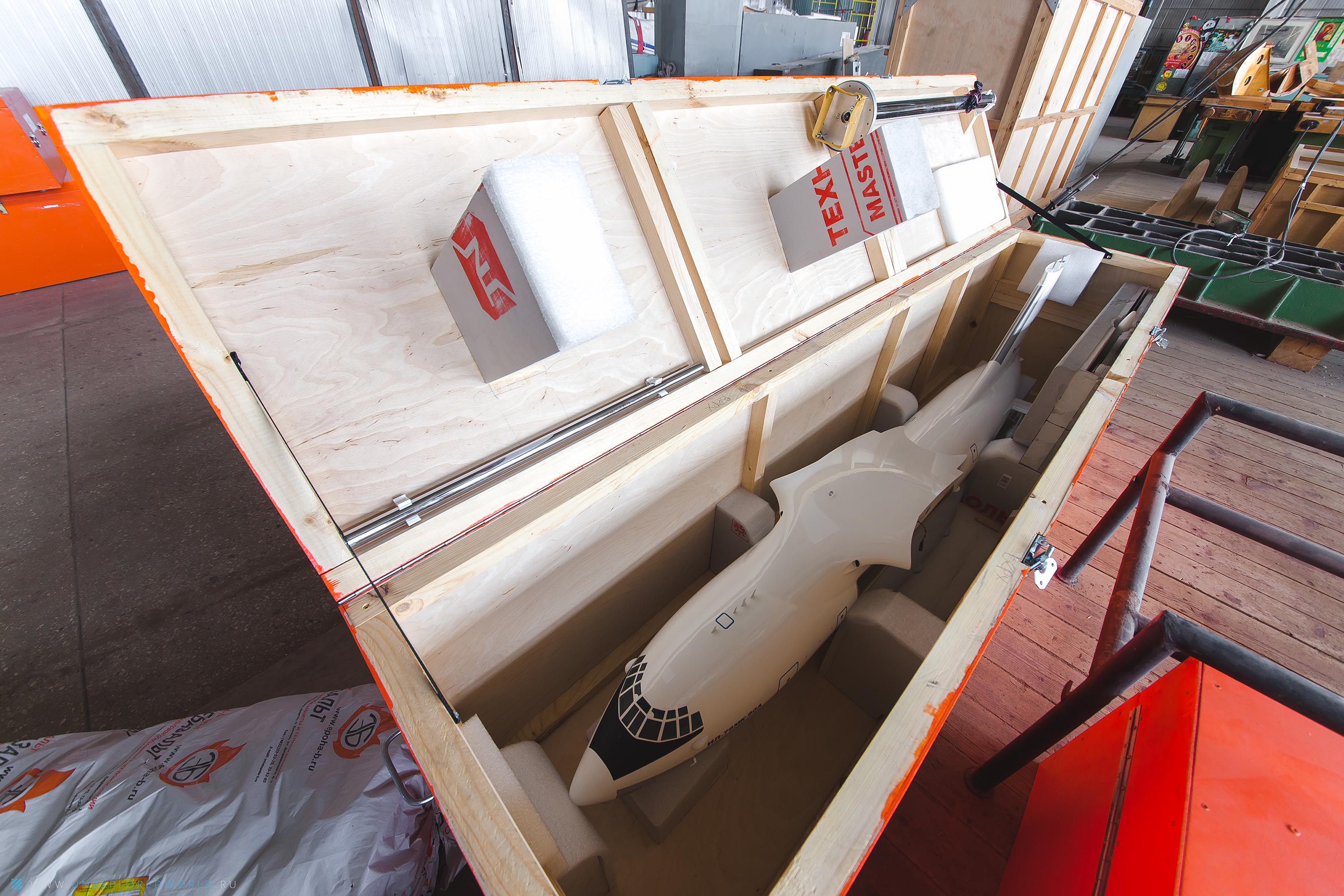
Among all the machines, the IL-76 mock-up most often came across. It is not surprising - this particular model of the aircraft was modernized not so long ago, with modern engines installed on it and a complete update of the avionics. If earlier the aircraft was controlled using a variety of instruments scattered throughout the cockpit, now almost all control elements (with the exception of backup ones) are located on modern LCD displays. As far as I can understand, these are the only two main differences.

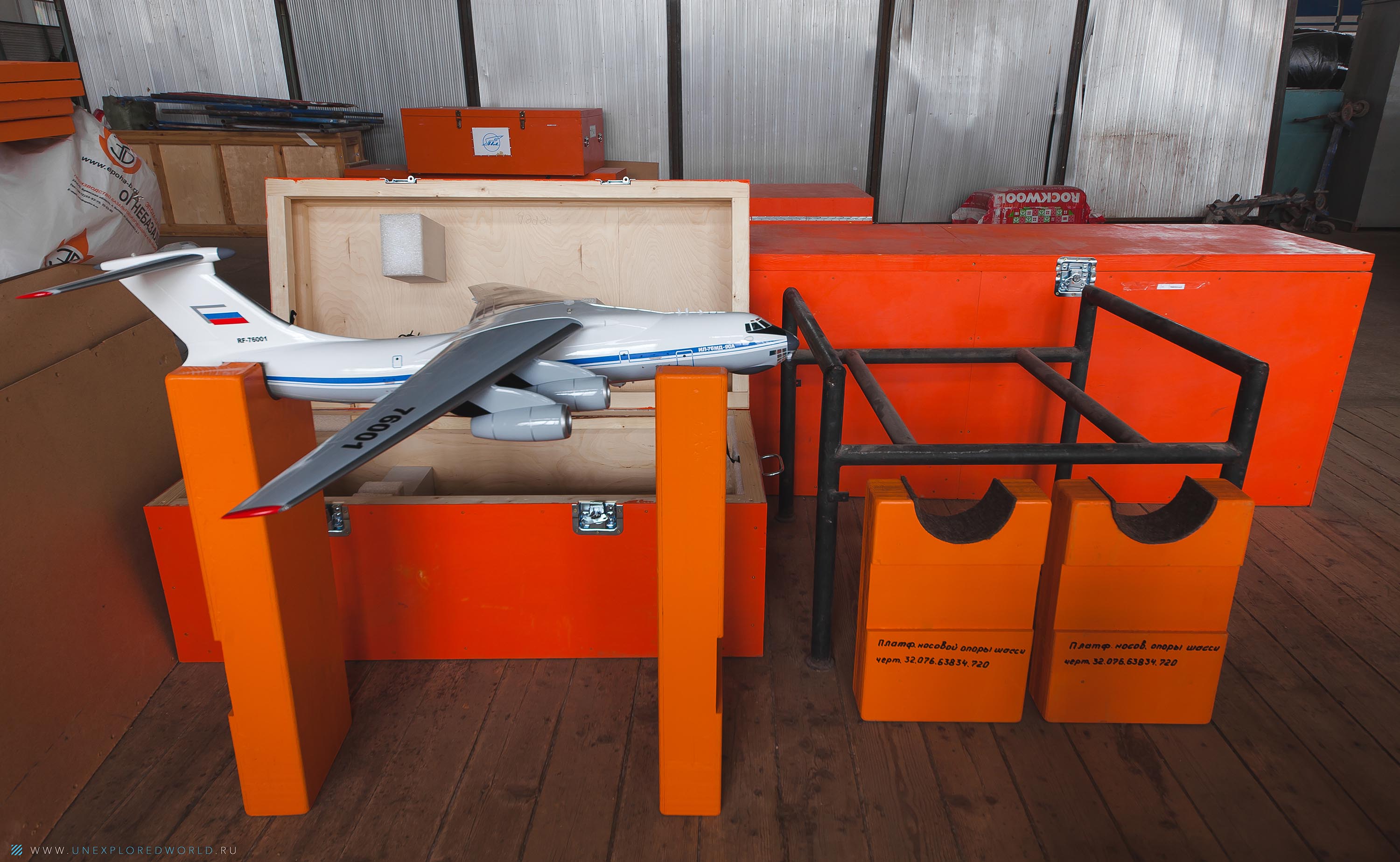

Replacing the controls in the cockpit (avionics) sounds like something simple, but in reality it is a very complex and time-consuming process that requires revising almost all the characteristics of the aircraft. The fact is that cables and wires from the cockpit go through the entire fuselage to the wings and tail, so replacing the aircraft avionics is not only changing the toggle switches in the cockpit, it is also reviewing the entire wiring and control system, and possibly finalizing the basic structure aircraft.
Few wings:
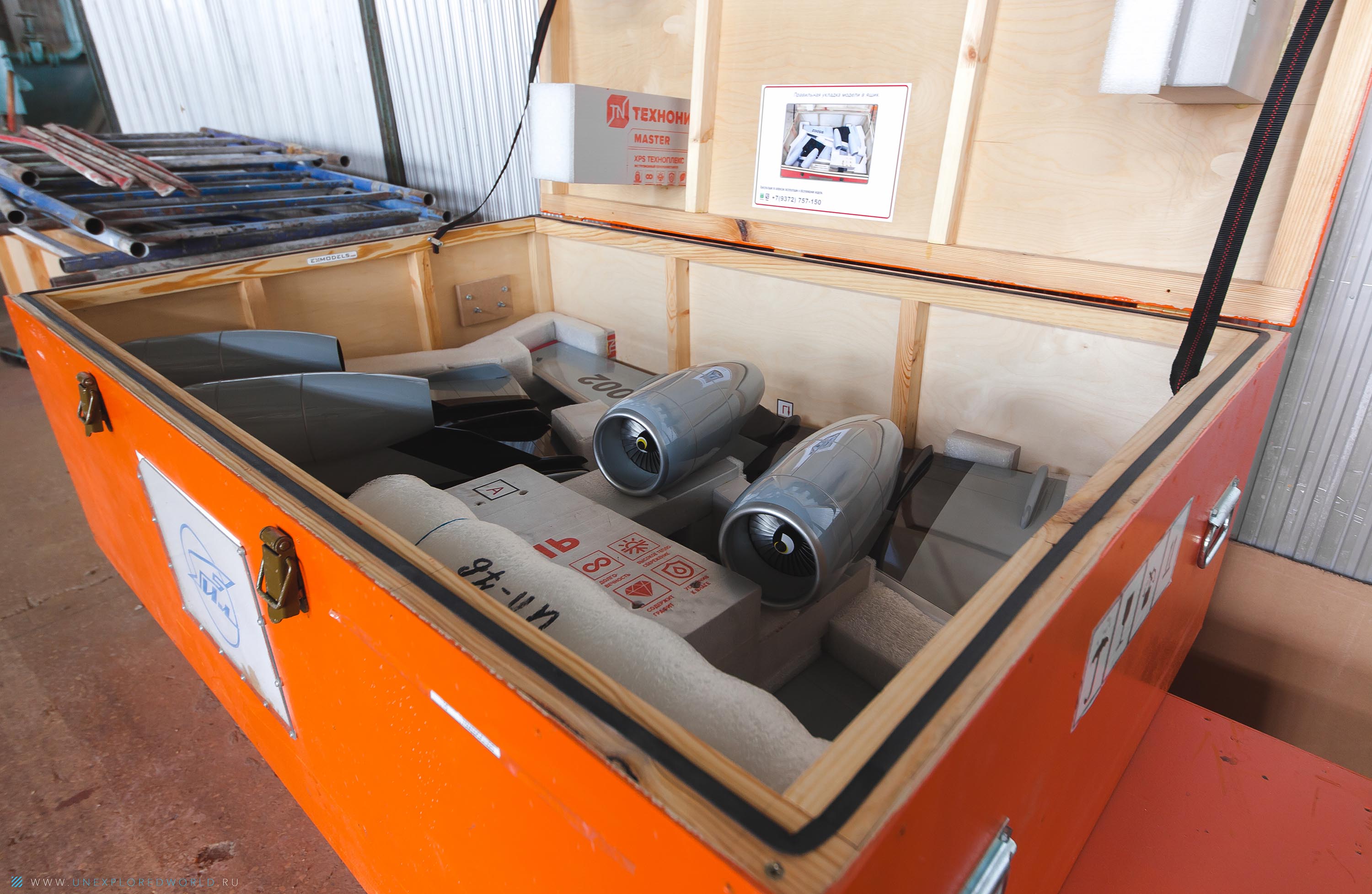
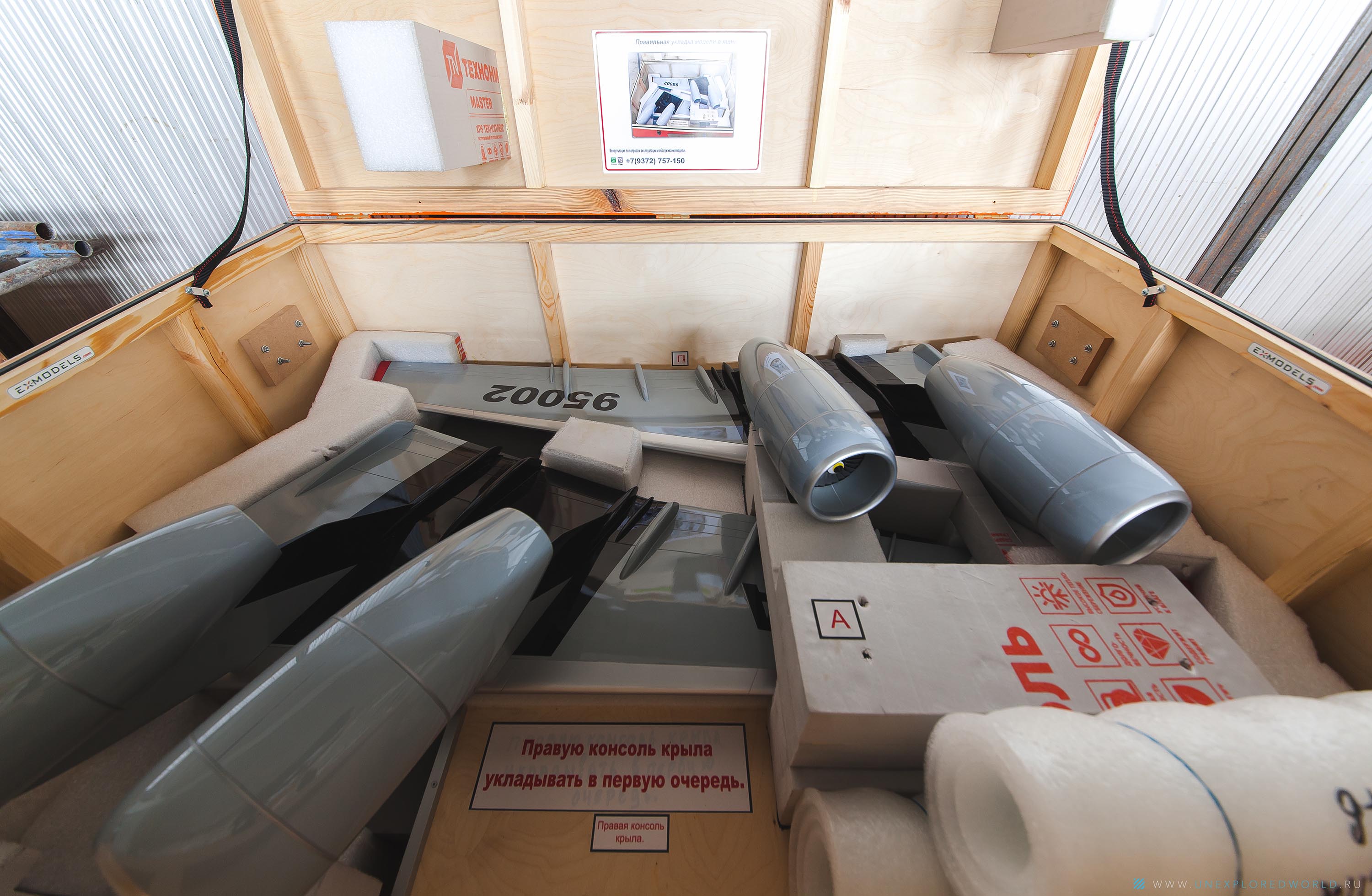



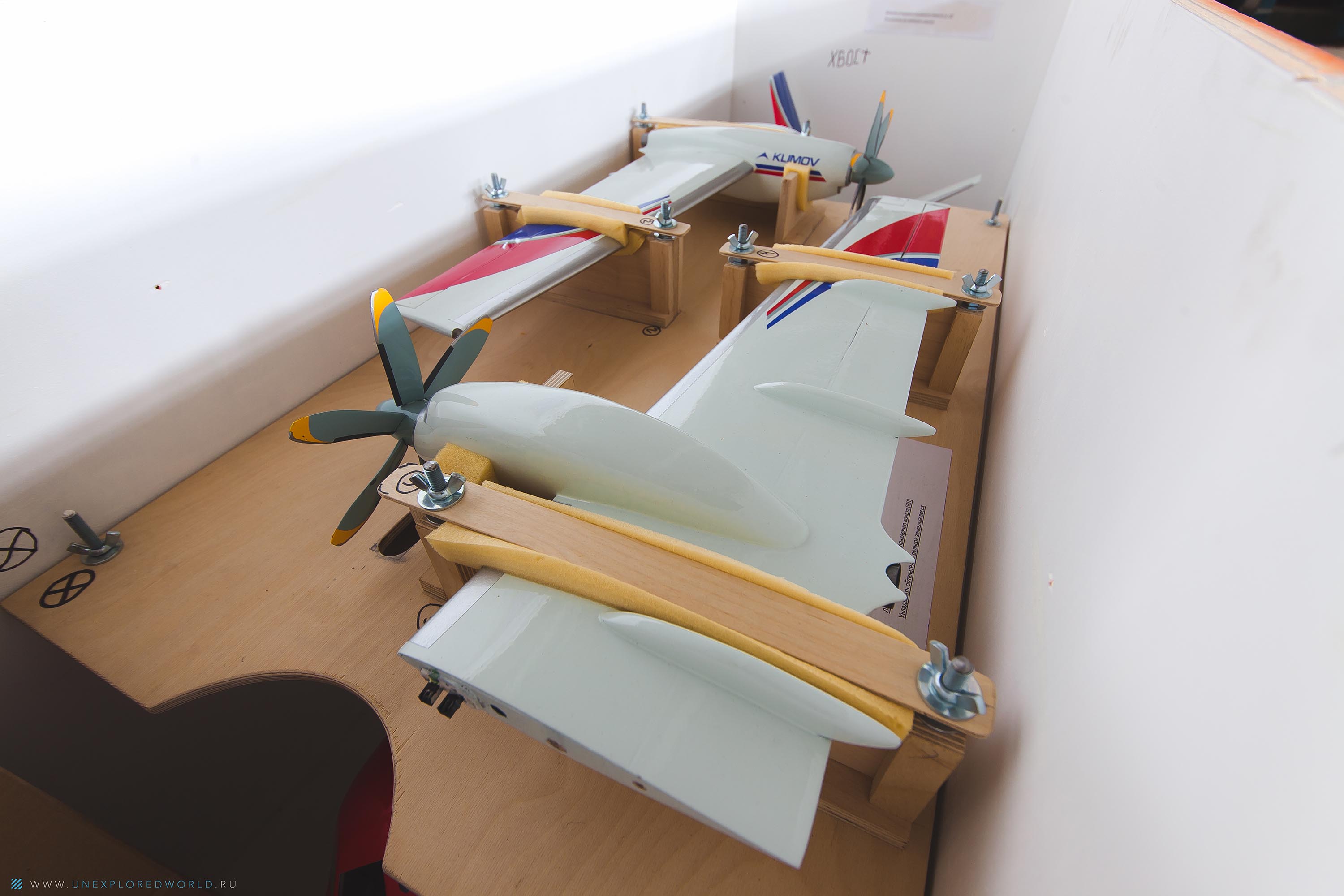
There is also a larger model of the 76th IL in this workshop.
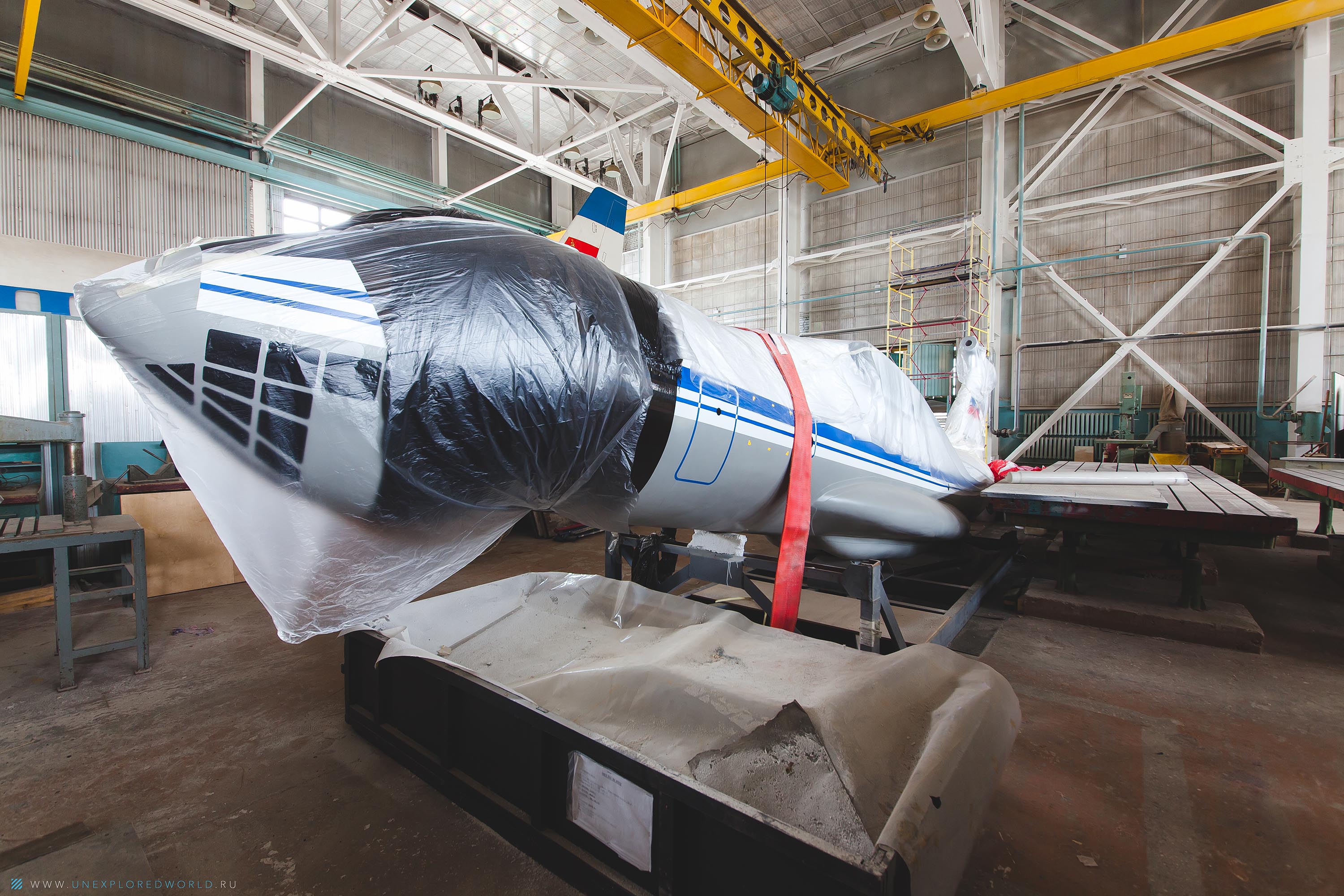


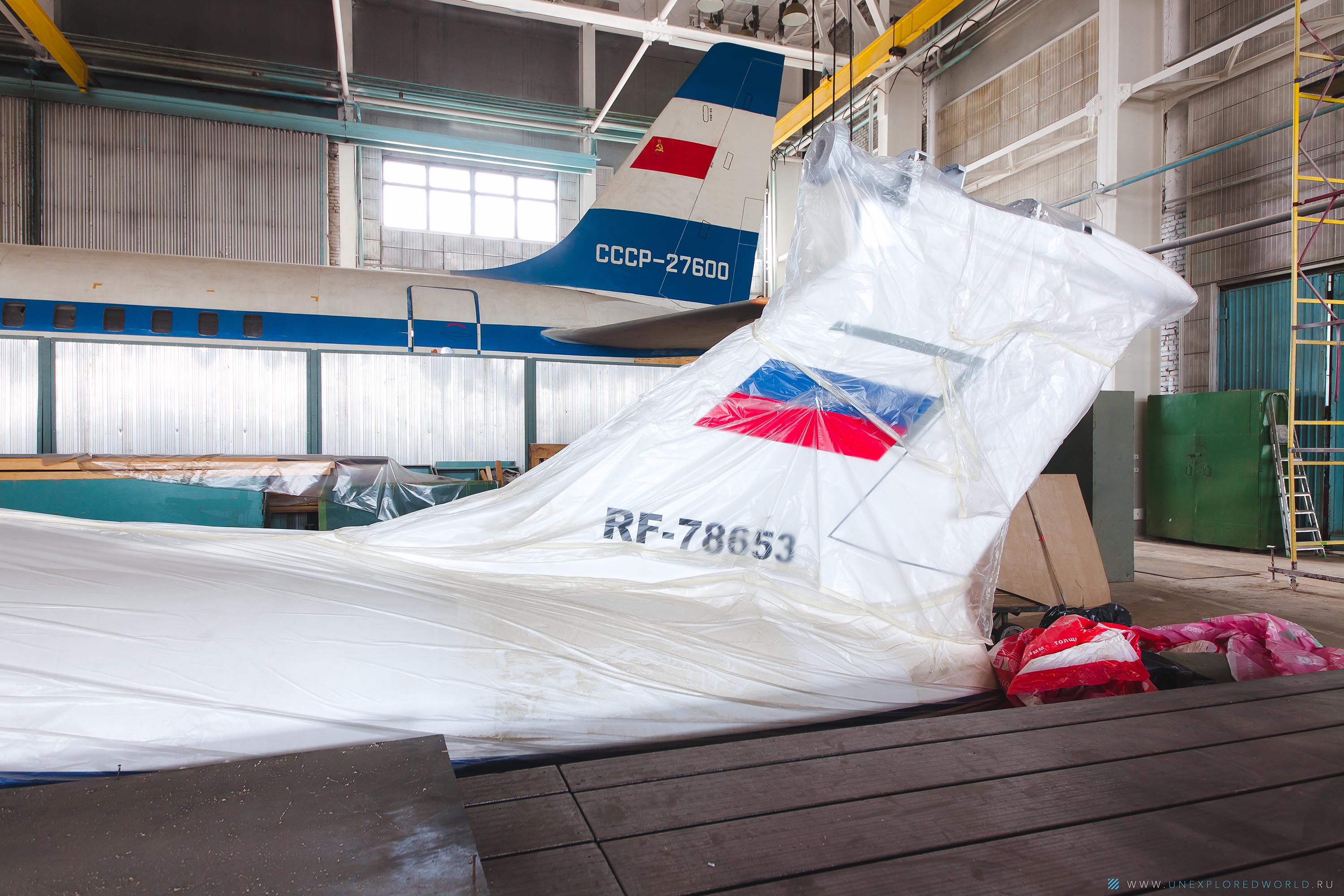
The wing seats of this model seem to be shifted closer to the tail (or the tail itself is shortened). I didn't notice it right away, but I noticed it when I was processing the photo.
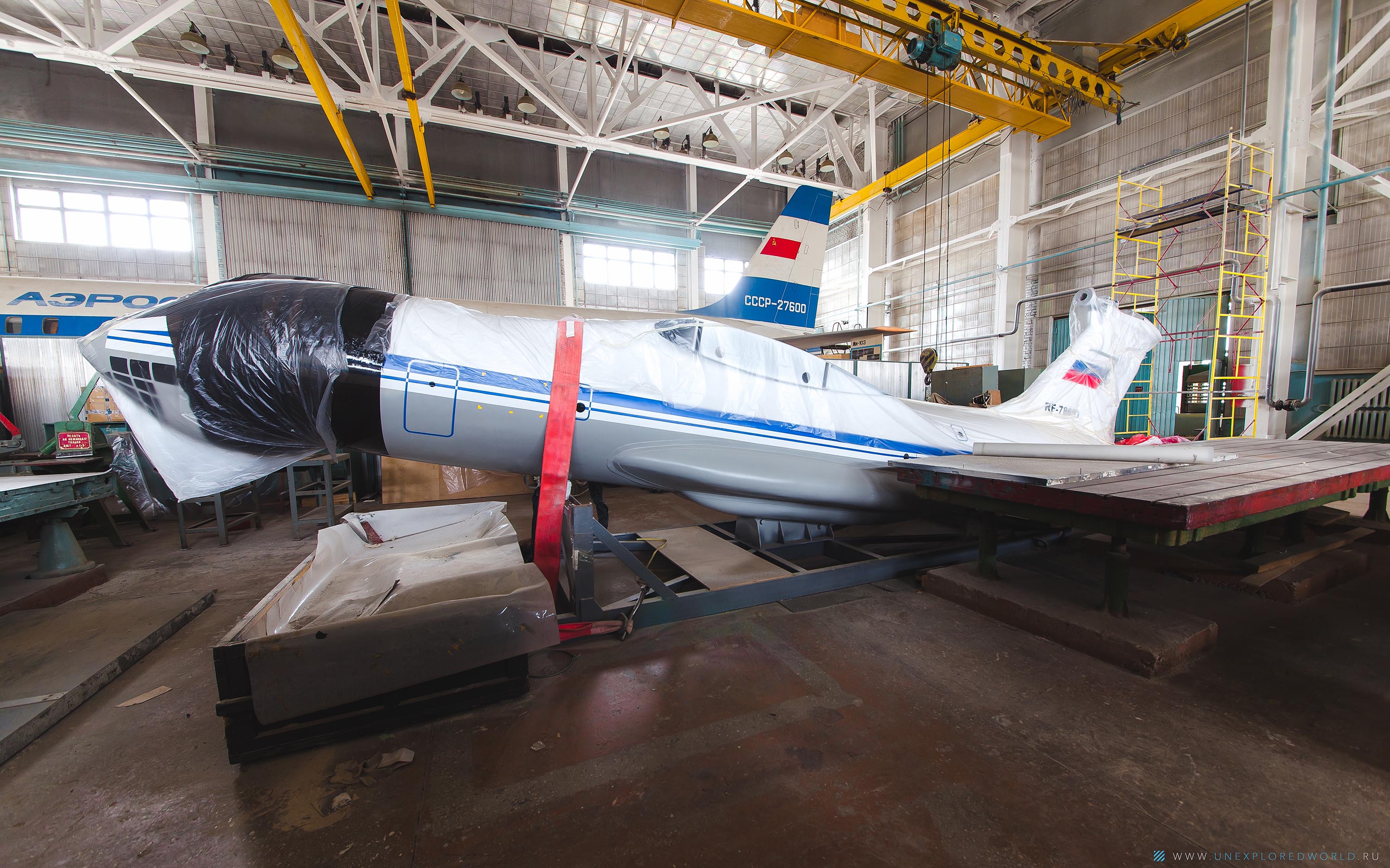
For some reason, the wings themselves are hidden at the other end of the workshop, away from the aircraft fuselage.

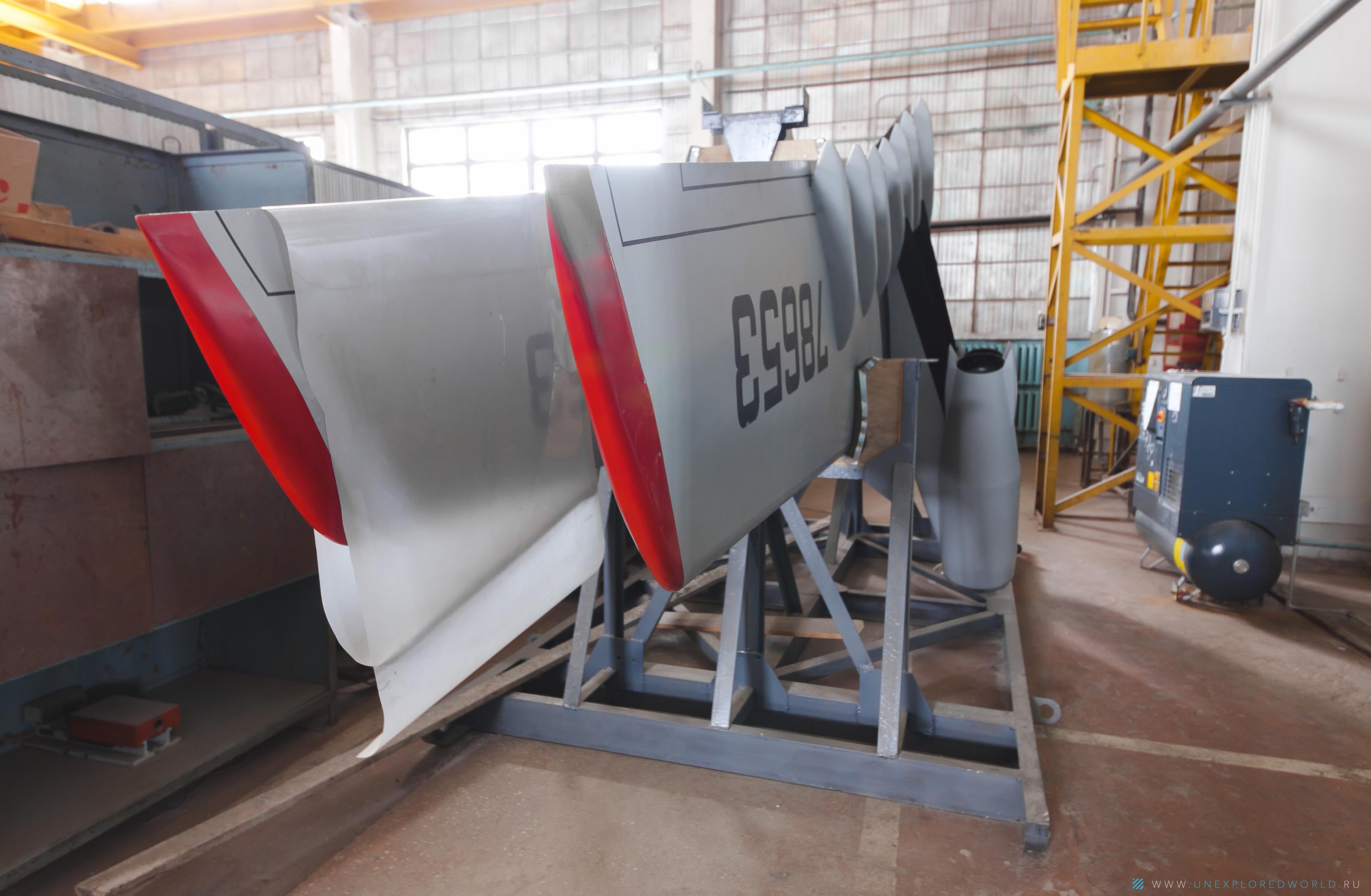

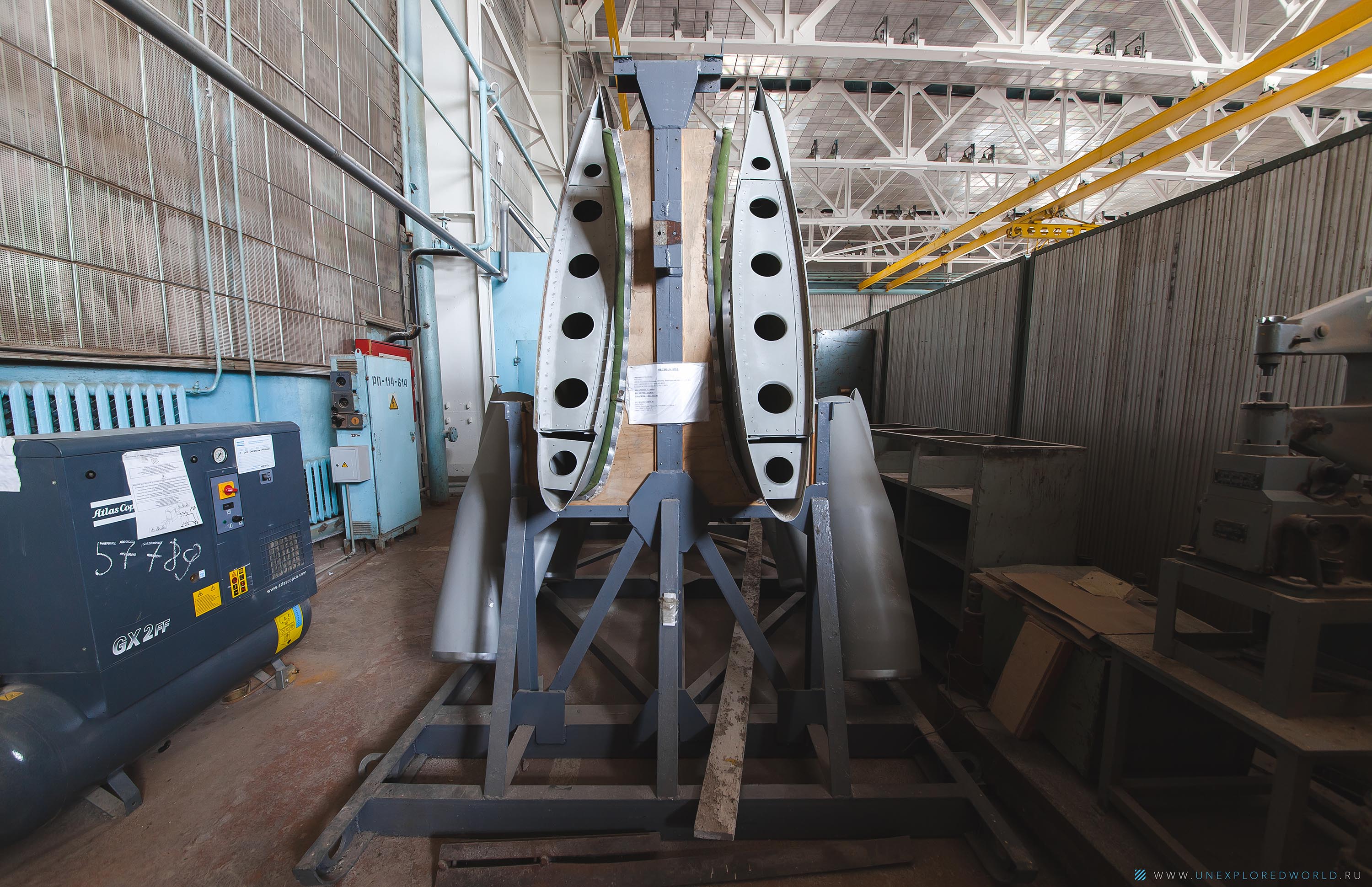
It would be very interesting to have a look at this assembled layout. But then again: collecting other people's planes is not a good idea.
Part 3. IL-114.
You've probably already noticed that in other photographs every now and then a huge plane flashed, hiding behind a fence. This is also a model, only in full size. And unlike all other models, you can walk inside in it.
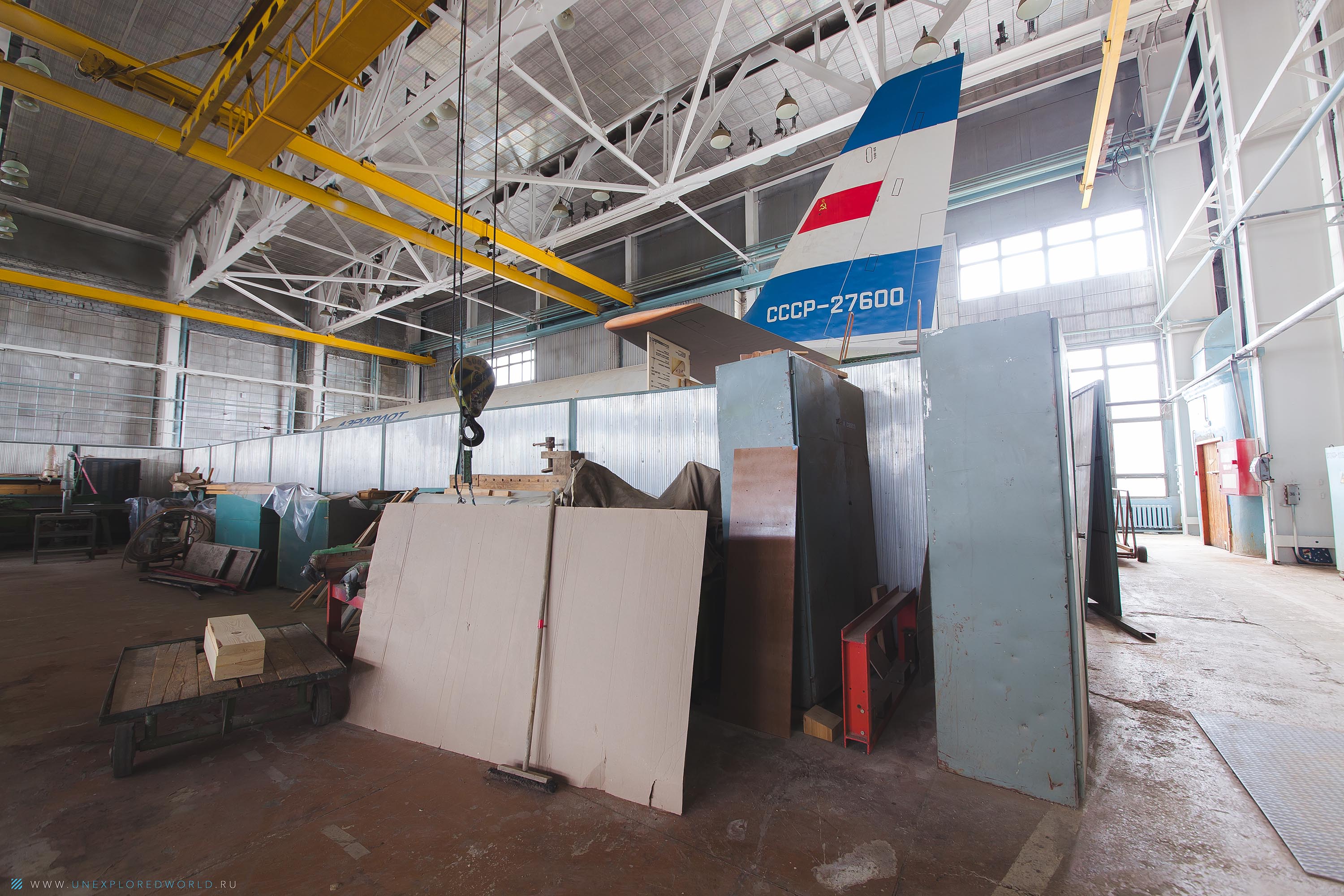
The use of turbojet engines in aviation is associated with a fairly high cost of aviation fuel. This makes regional short-haul flights virtually unprofitable for airlines.
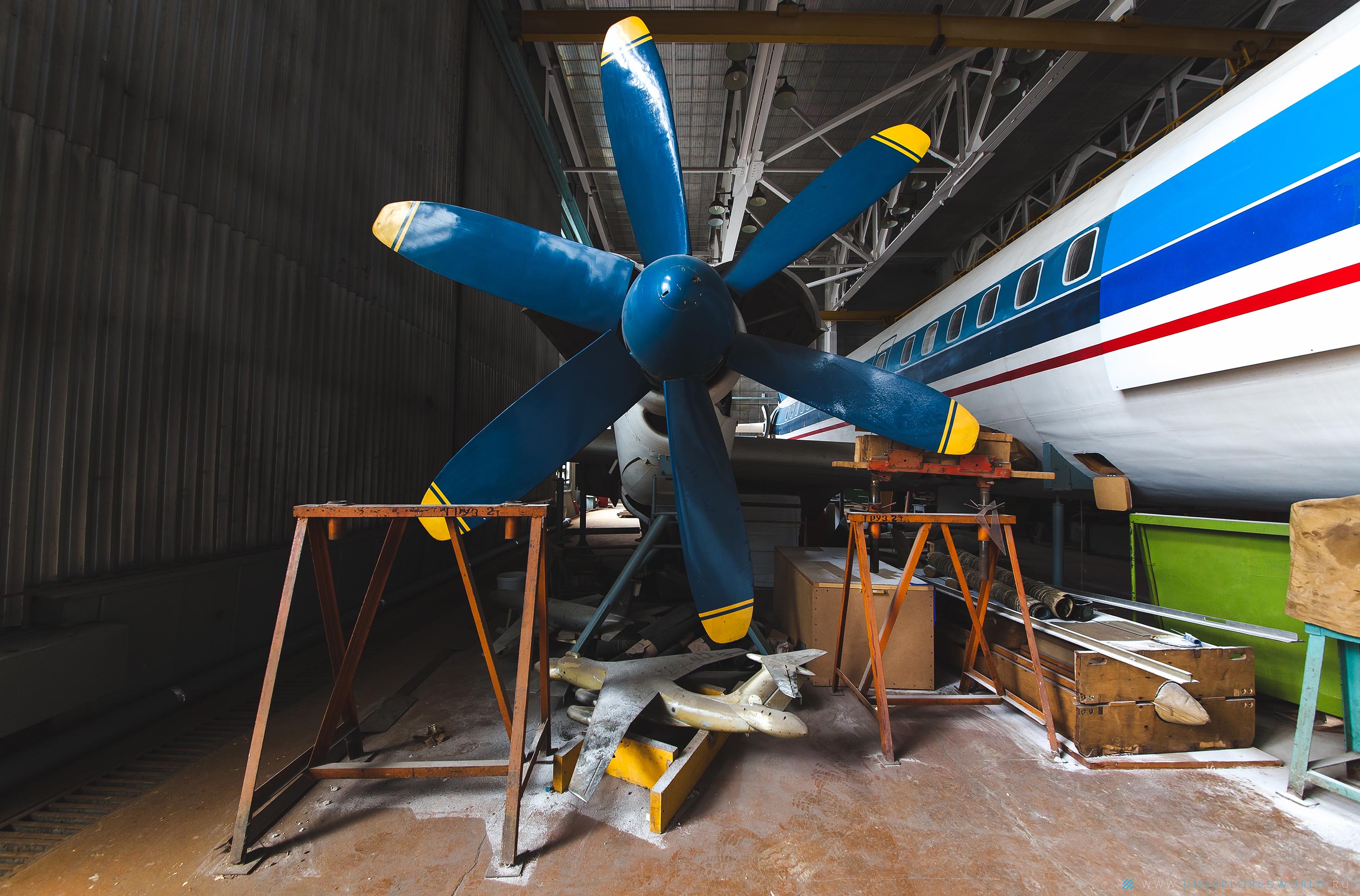
But what about people living in the regions of the Far North, where there is often no other way to get to another city except by air? Answer: turboprop aircraft. And this solution is not only for server regions.

In Russia, some time ago, the problem of a shortage of regional airliners was identified, as a result of which many people had to fly from one regional center to another through Moscow.
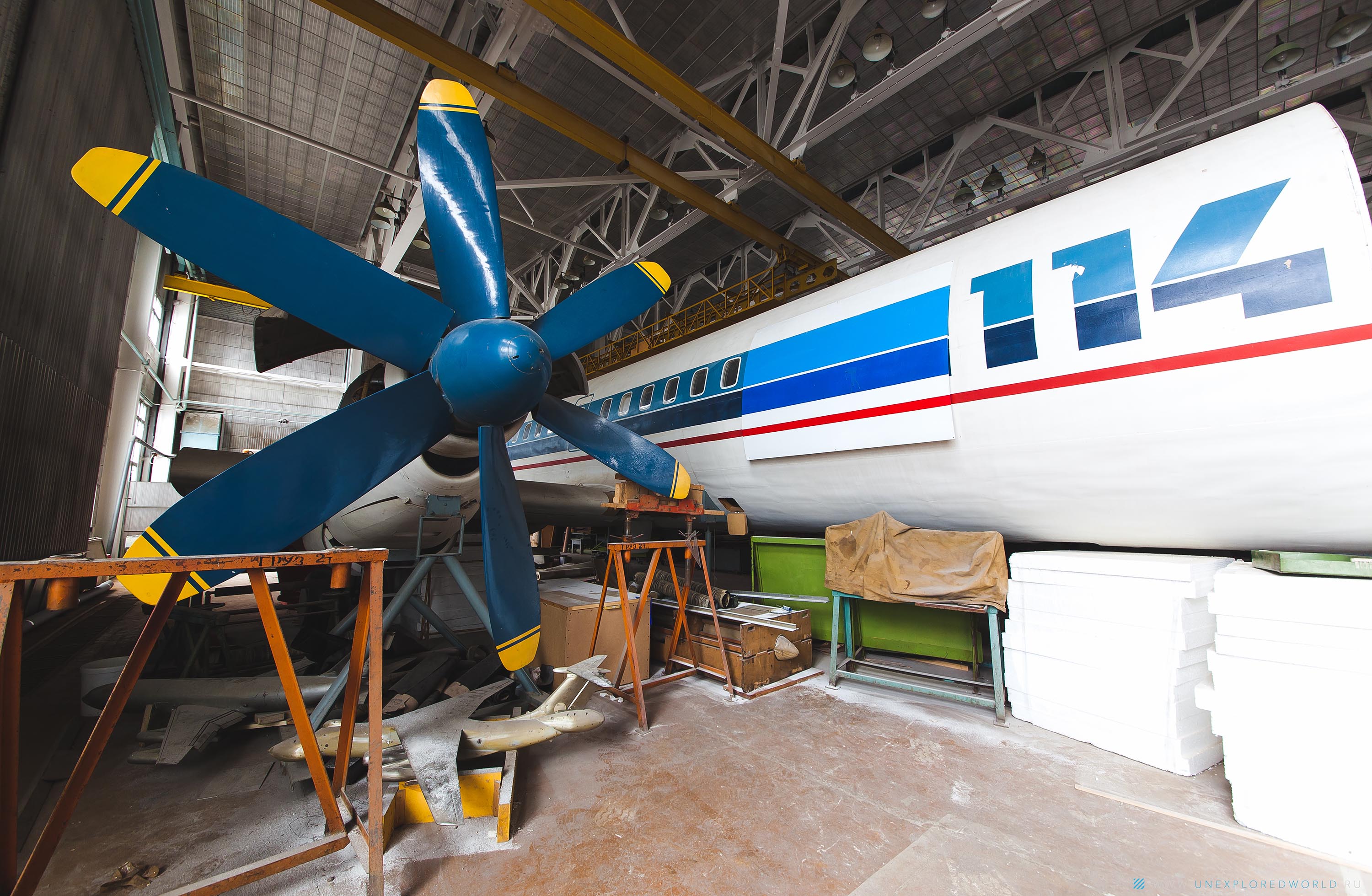
Turboprop aircraft allow reducing aviation fuel consumption, first of all, due to the fact that the engines themselves consume less, and secondly, turboprop aircraft are usually designed to carry a small number of people. Specifically, the IL-114 has a passenger capacity: 64 people.
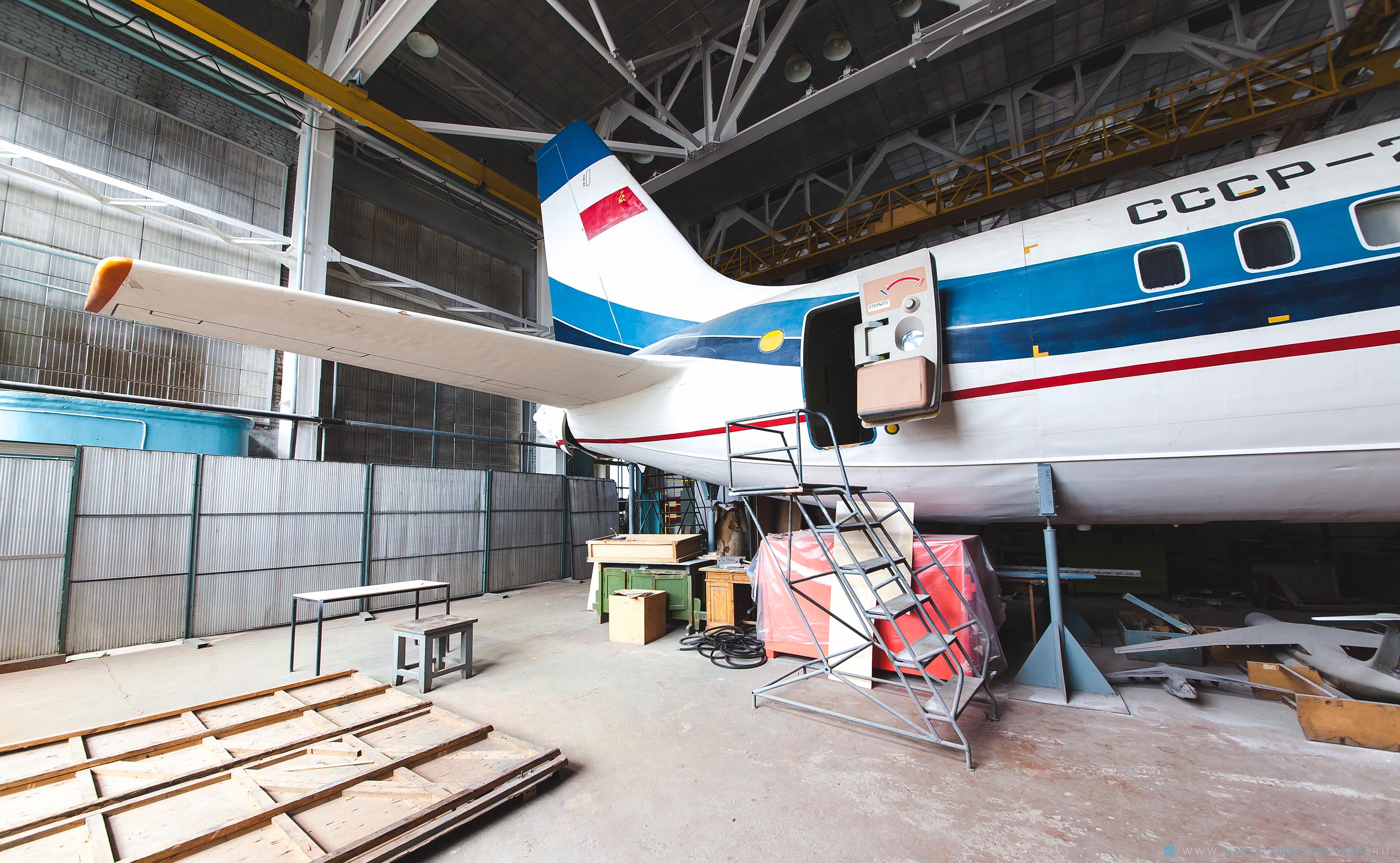
The model is made of plywood, which, of course, cannot be said at a cursory glance. Both outside and inside, it looks almost like a real plane. The only strange thing is that it has no cockpit, like the second wing. In the next photo, plywood is clearly visible in a place where there is no paint:
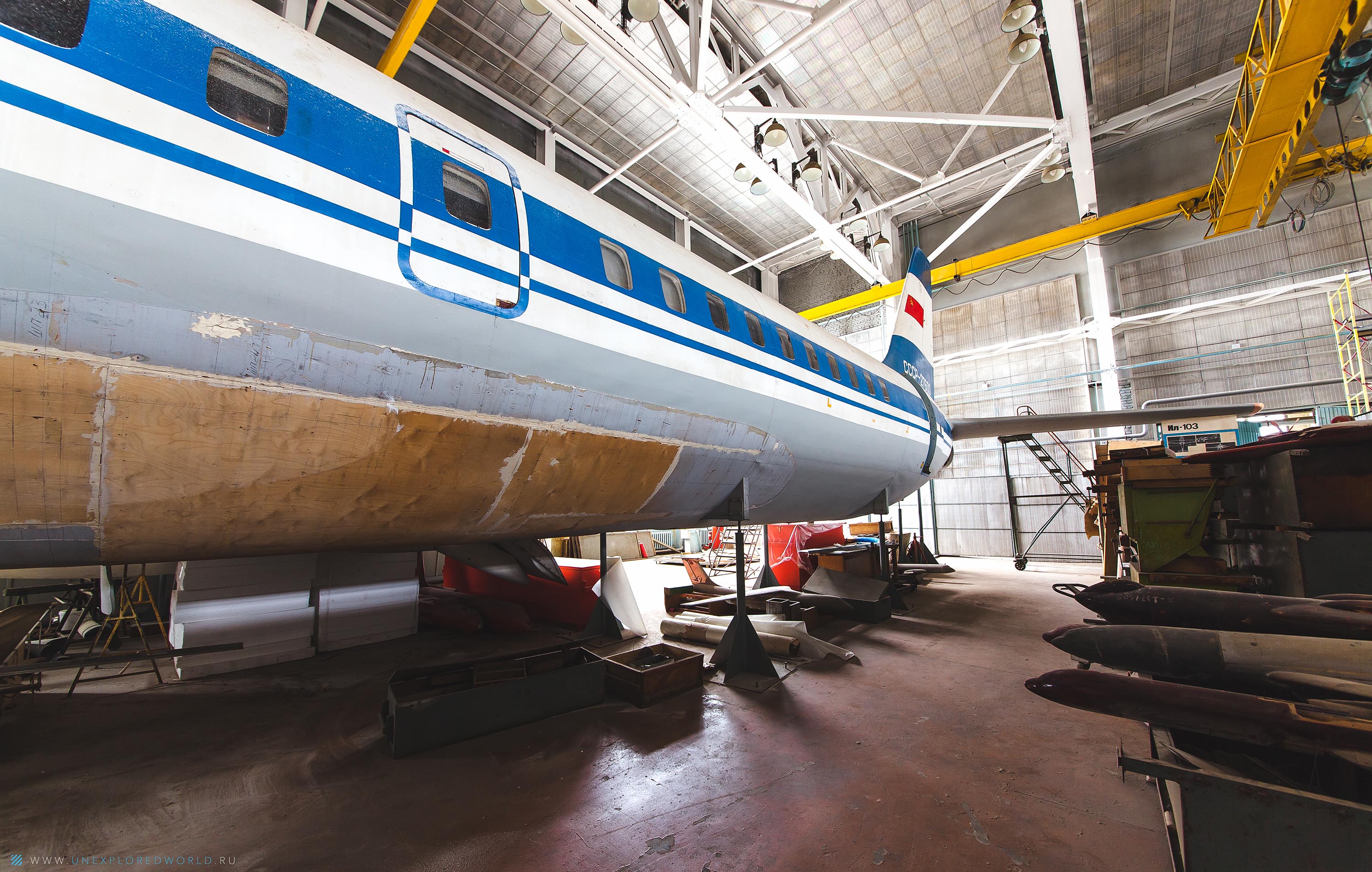
The first wing, in general, also came out "sideways". There is only half of the wing here:

But there is another important part: the turbine generator. She is responsible for generating electricity for the aircraft. Did you know that it is she who makes the noise on the plane when passengers board?


The layout is very dusty, haven't been cleaned here for a long time.

The chassis is very funny:

But the engine even looks like a real one (or maybe it is real?).

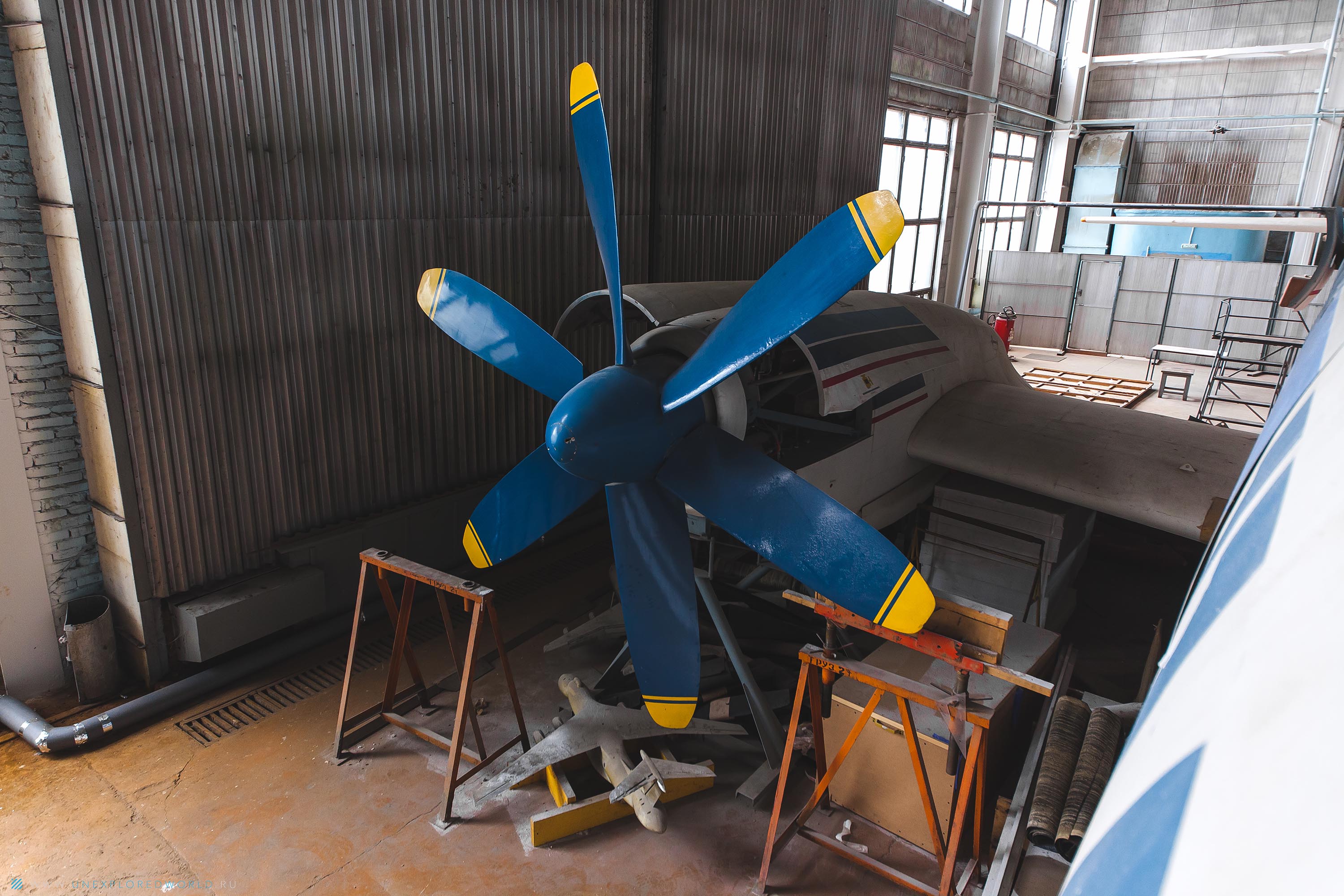
Here it is - the model of the aircraft in all its glory:

And you and I will feel like passengers of an old Soviet liner and visit inside!






If we woke up in this cabin, forgetting how we ended up in it, we would definitely not distinguish it from the cabin of a real plane. Imagine what a surprise it would be to see a model workshop from an illuminator?
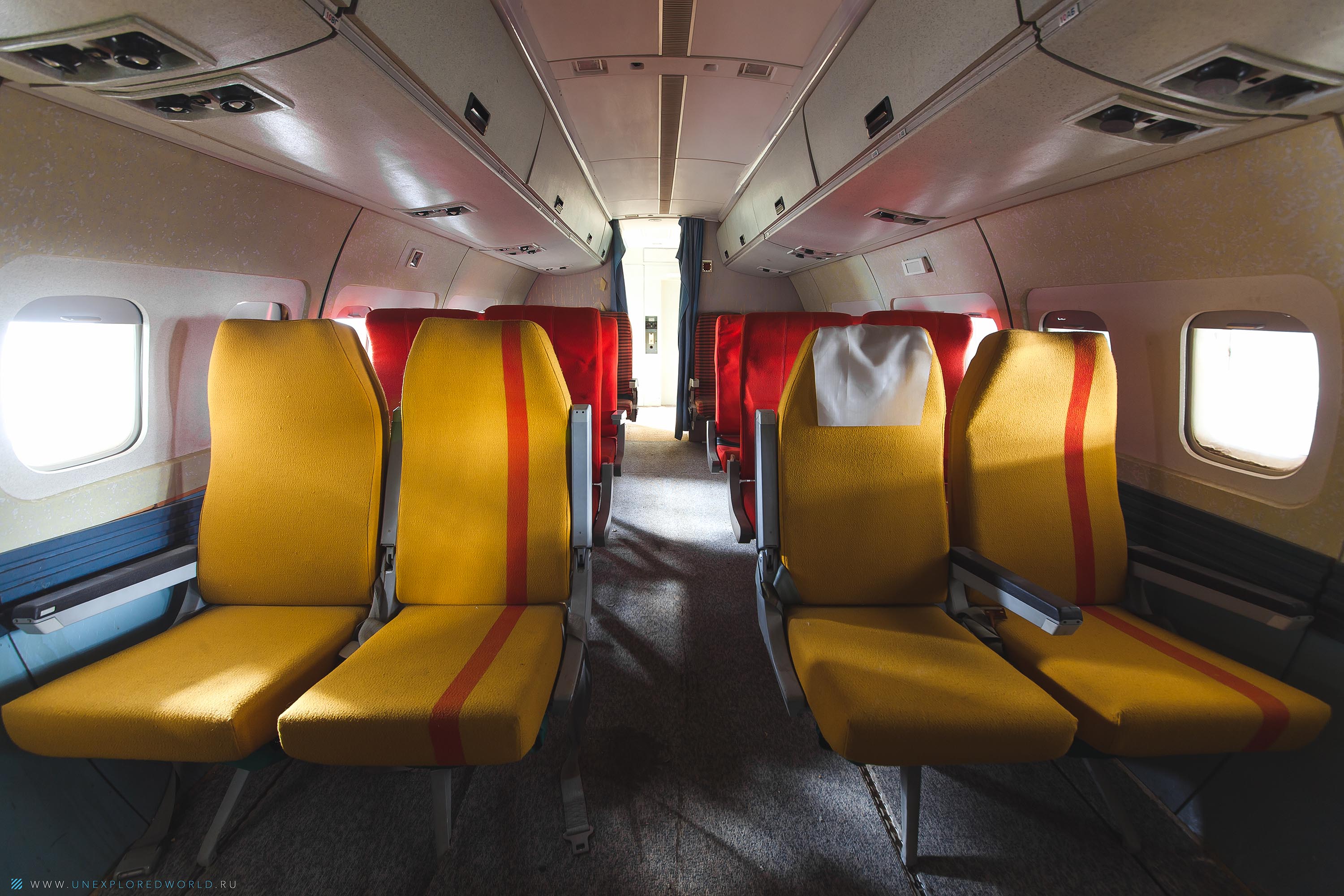



General plans of the workshop:
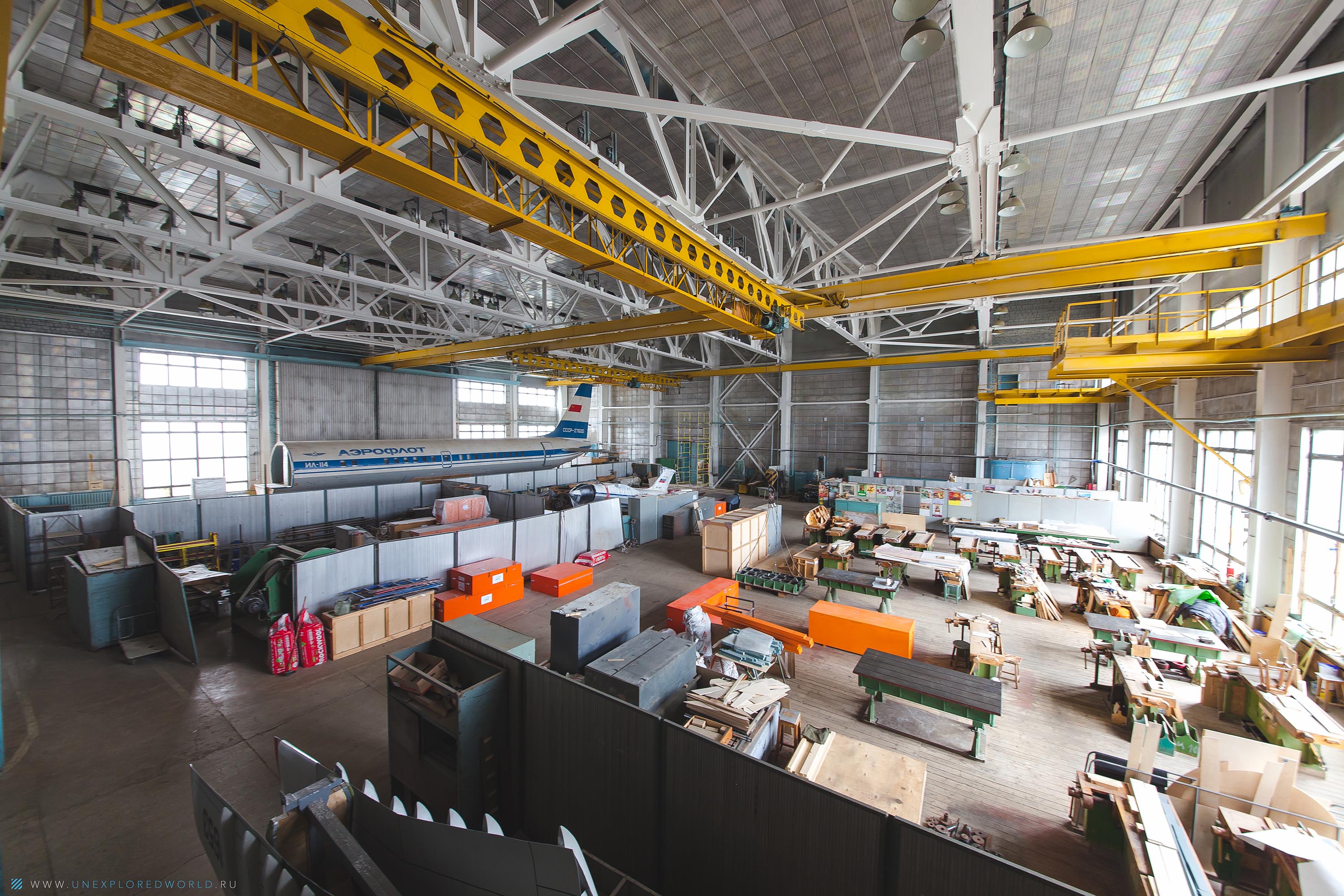


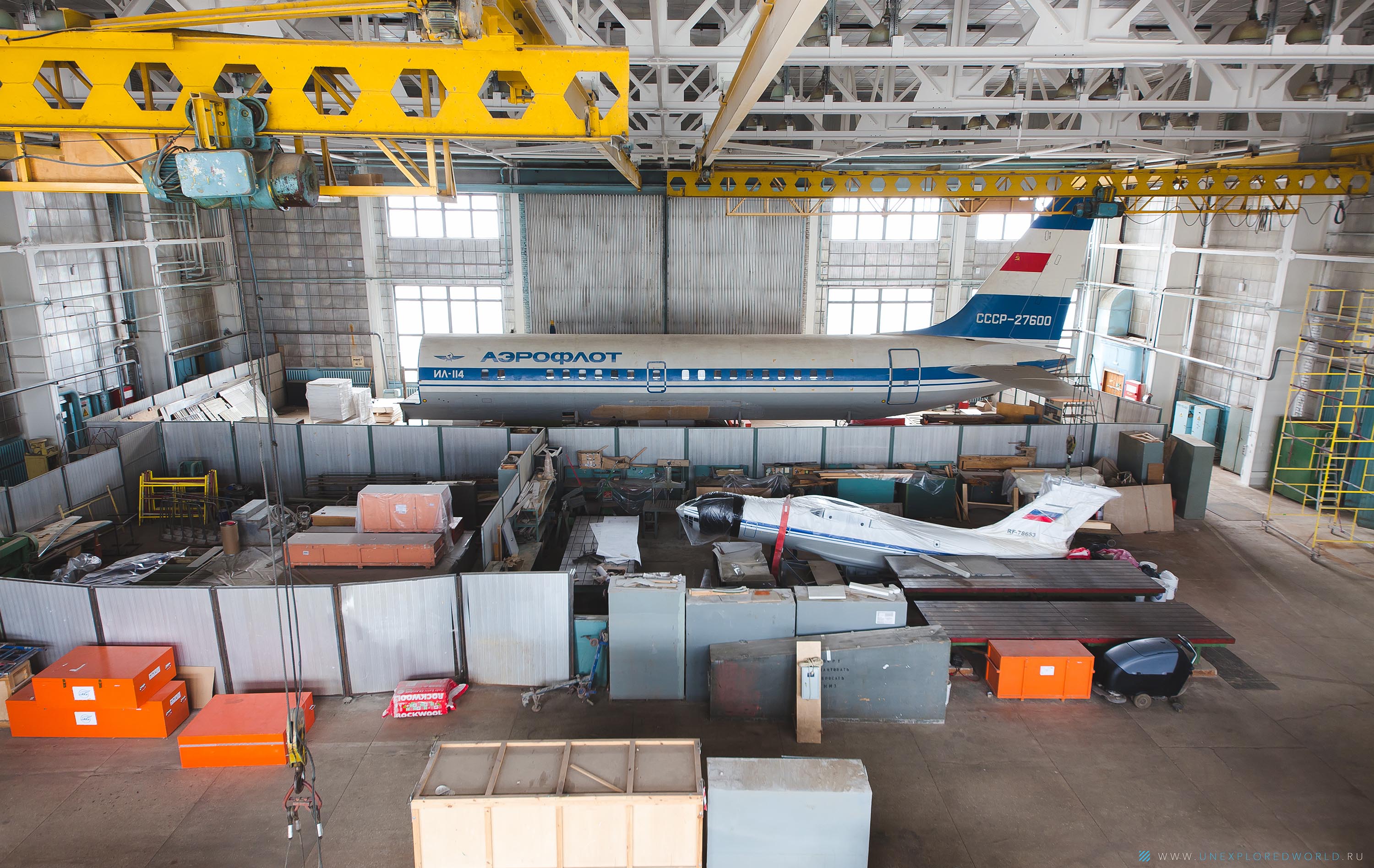
PS When visiting this workshop, none of the models was damaged, all the things used during the shooting were carefully returned to their places.
That's all. Thank you for the attention! Yours sincerely, Unexplored World Team.
One Response
Where are the server regions?)
The big 76 has wings, sort of in the right place; more like the specifics of the foreshortening. On the general plans of the workshop, he already looks normal.